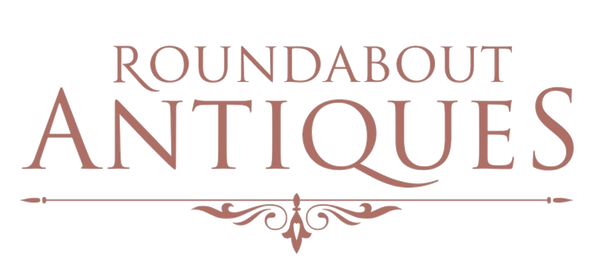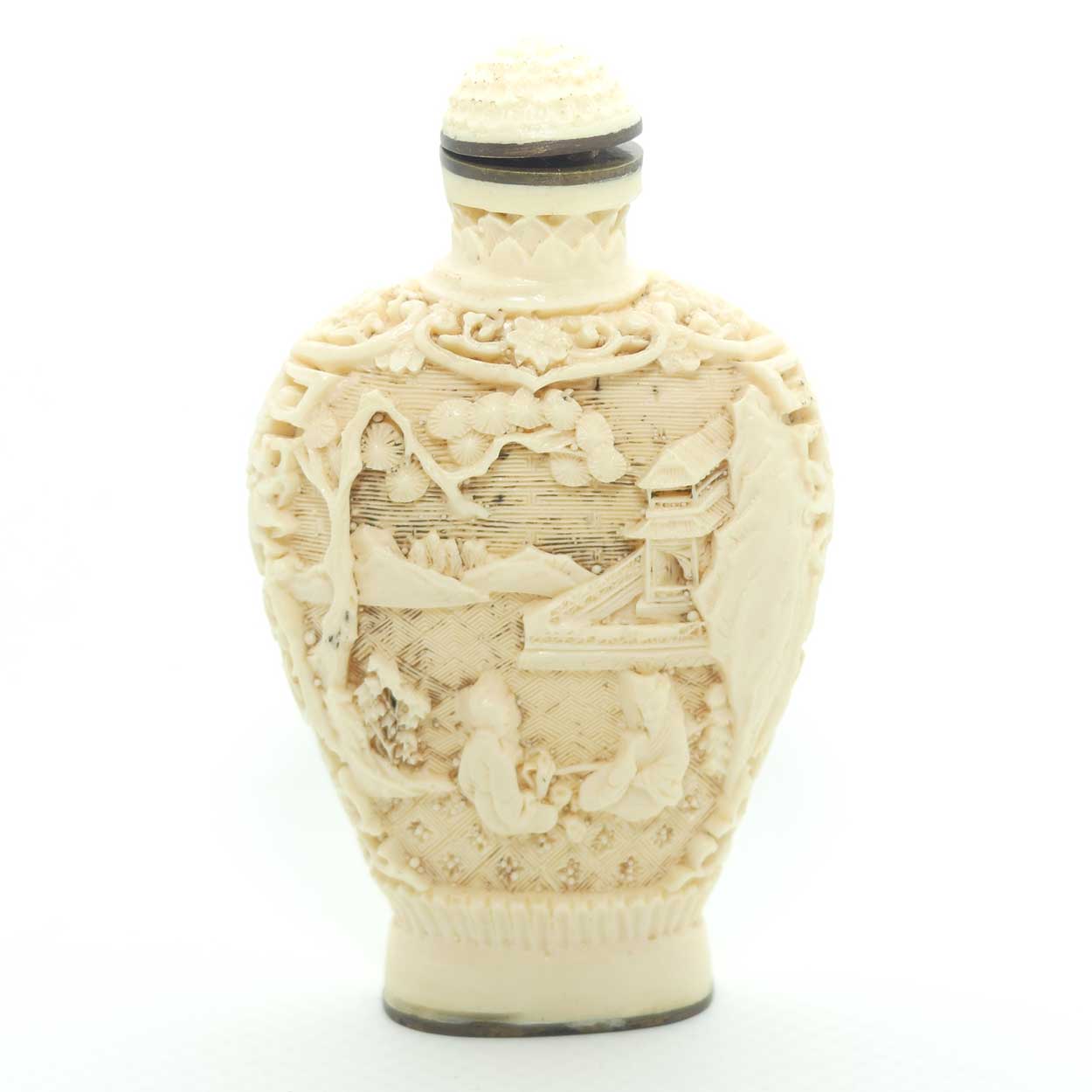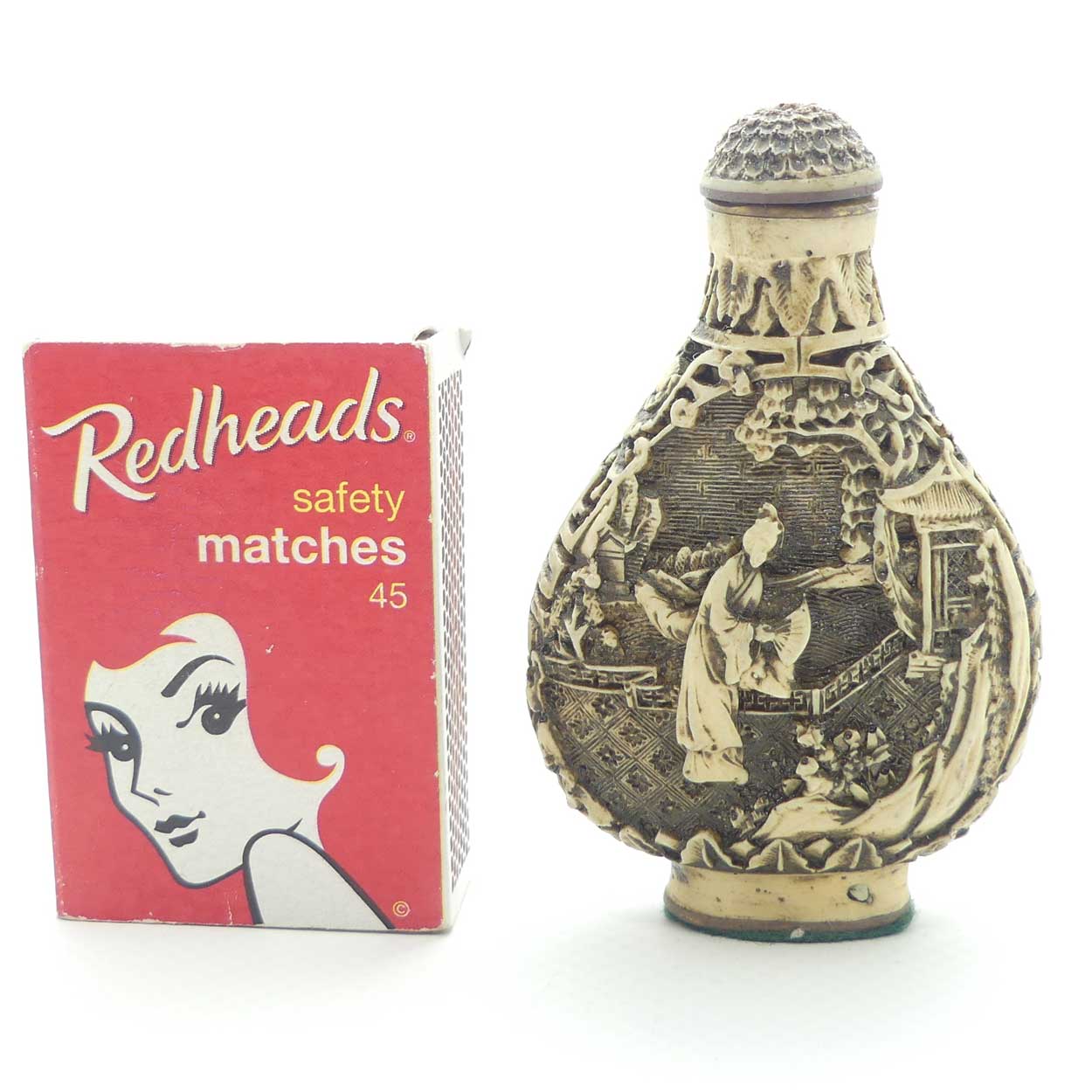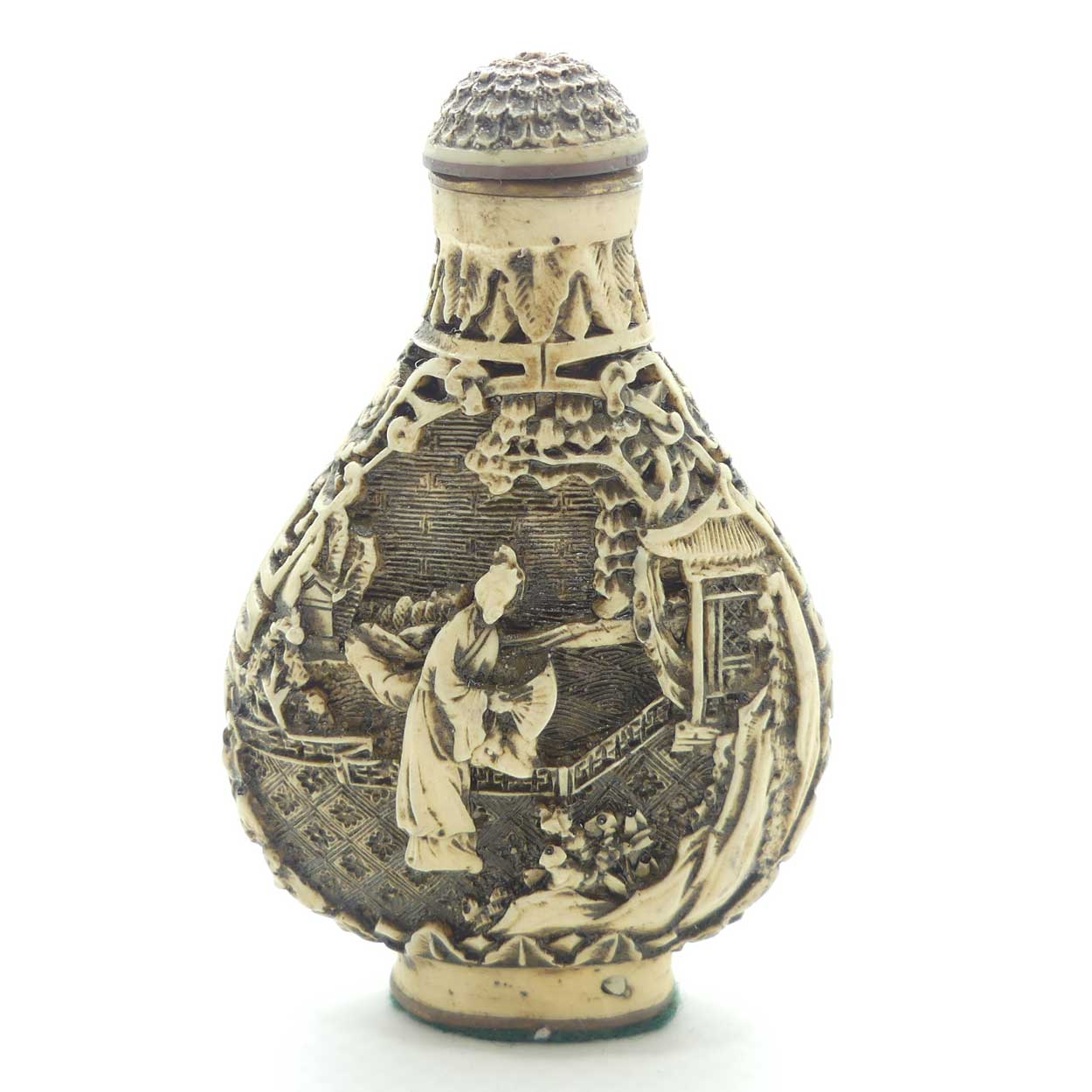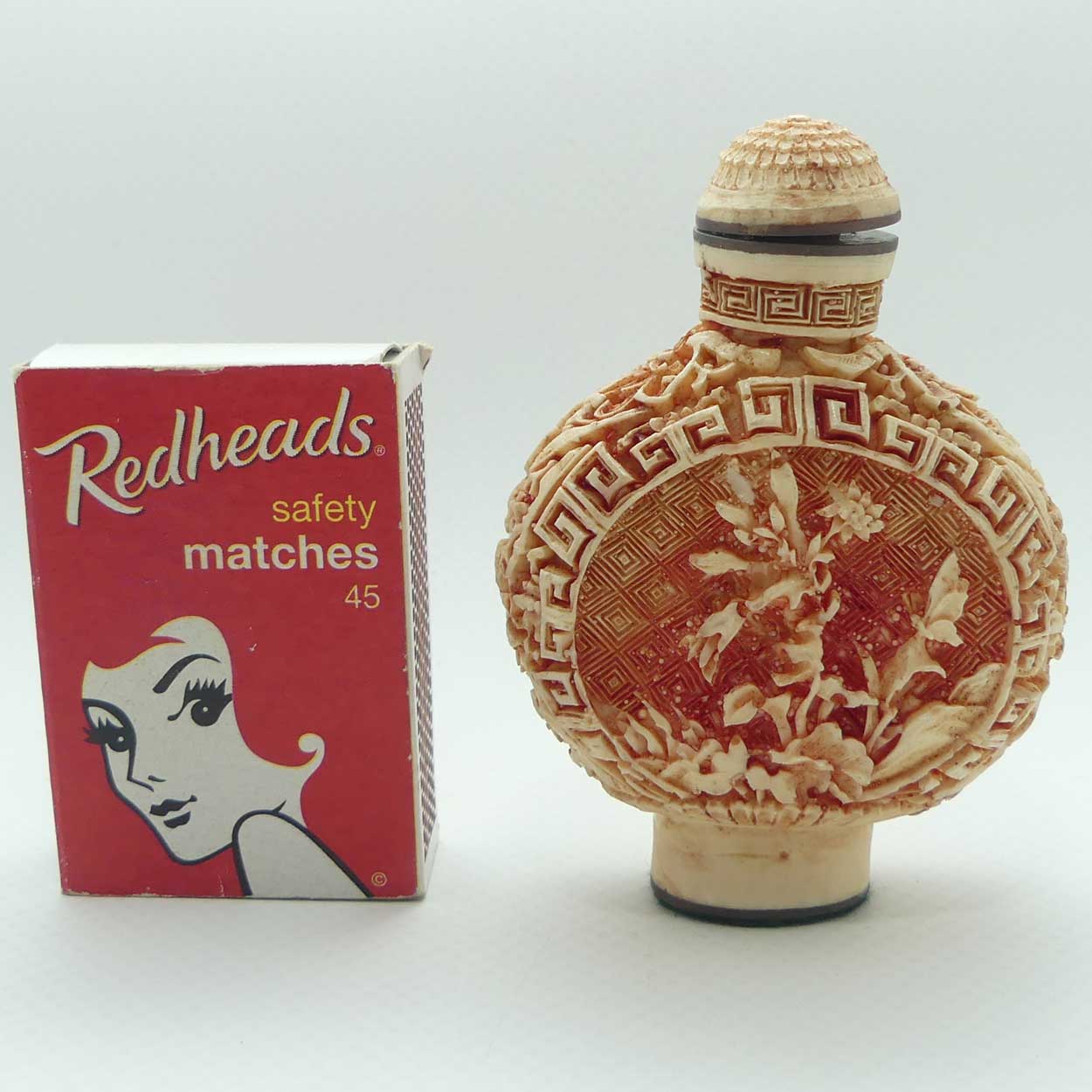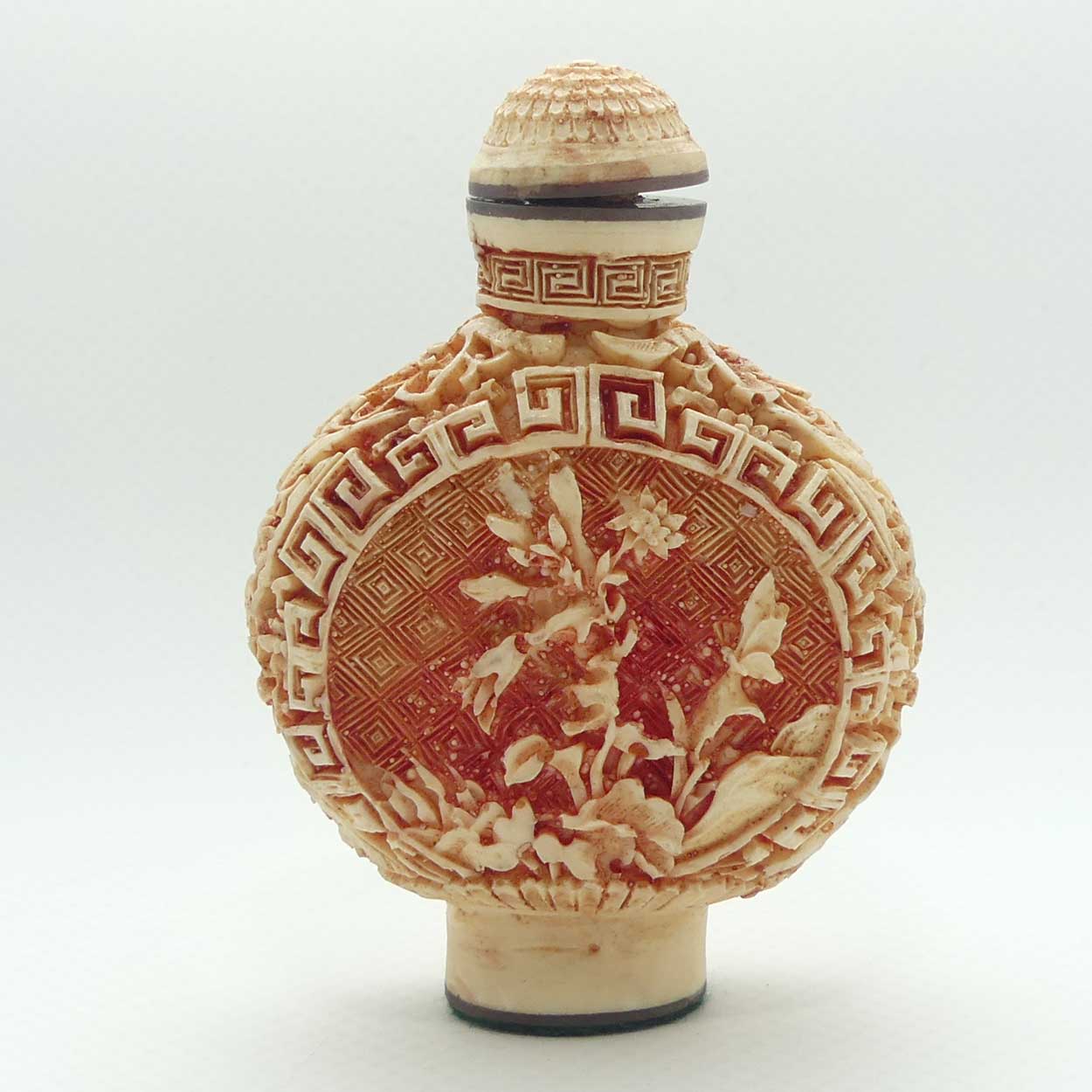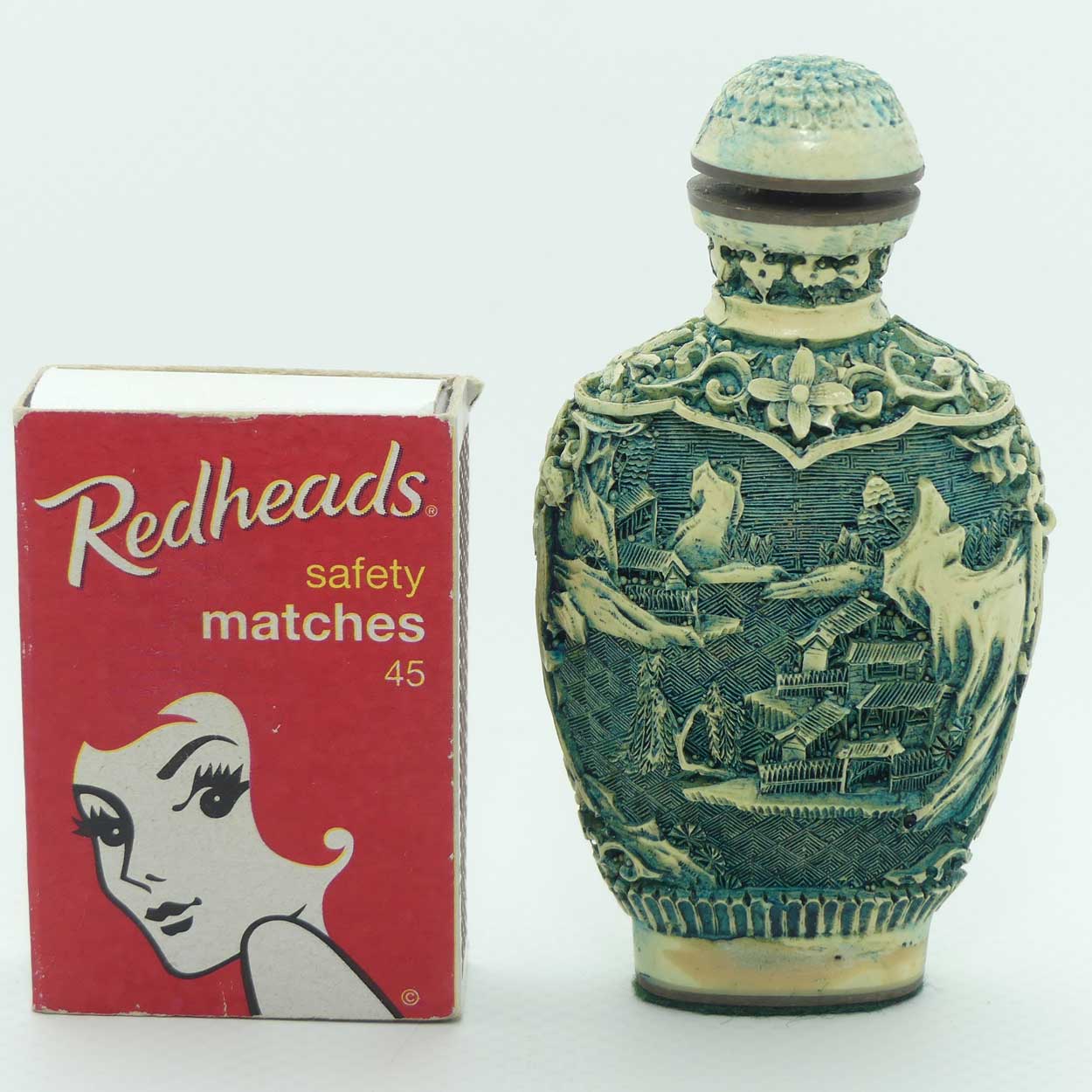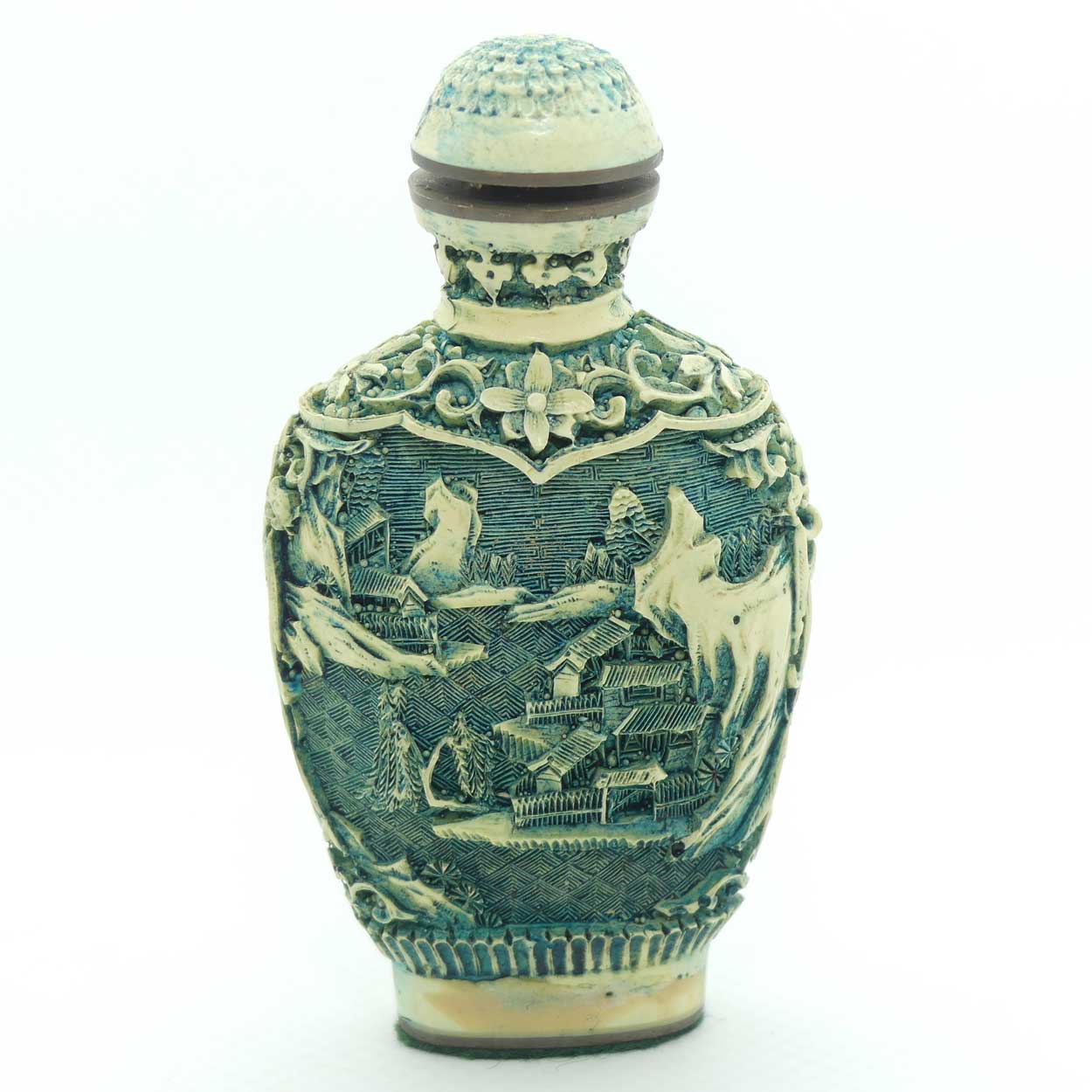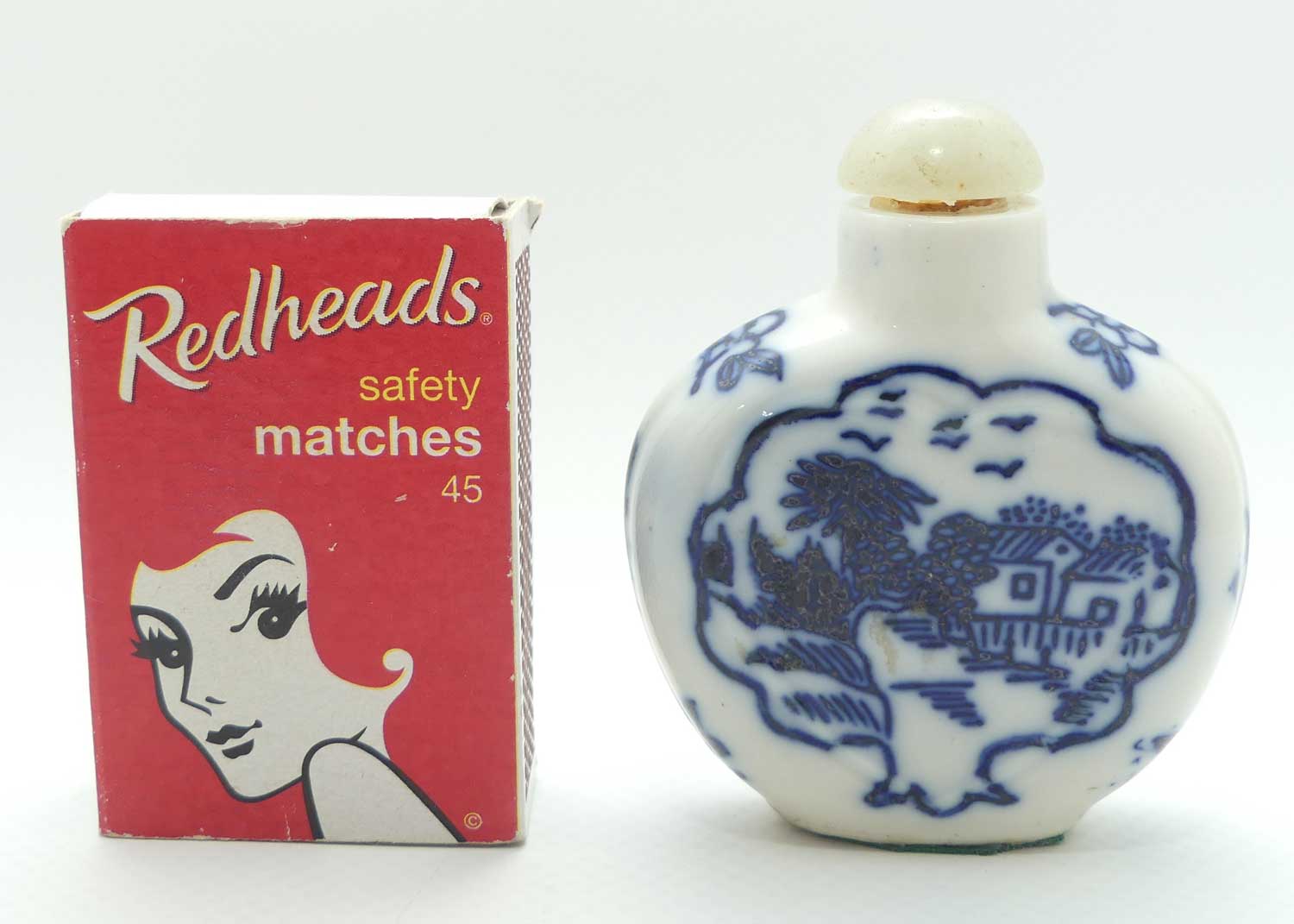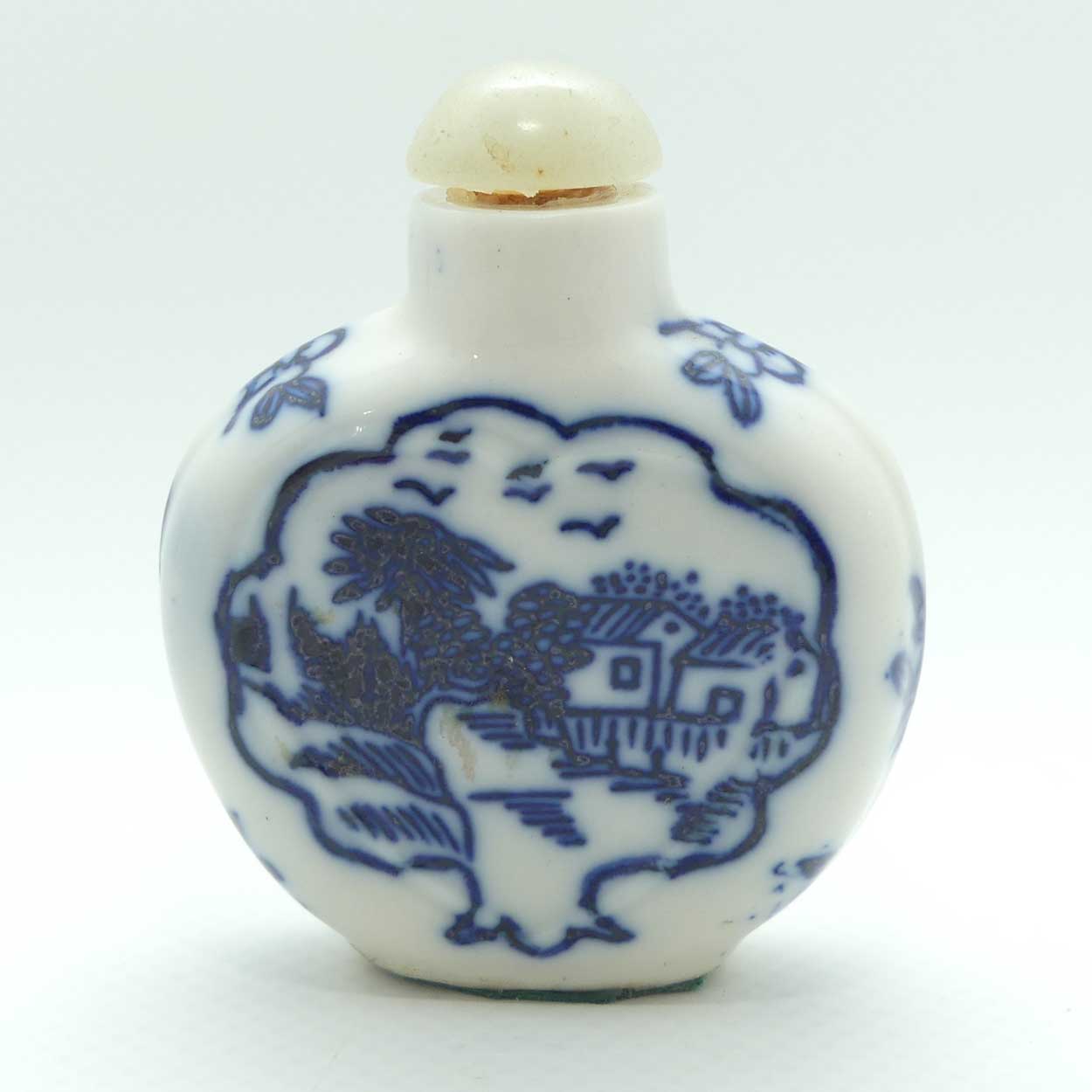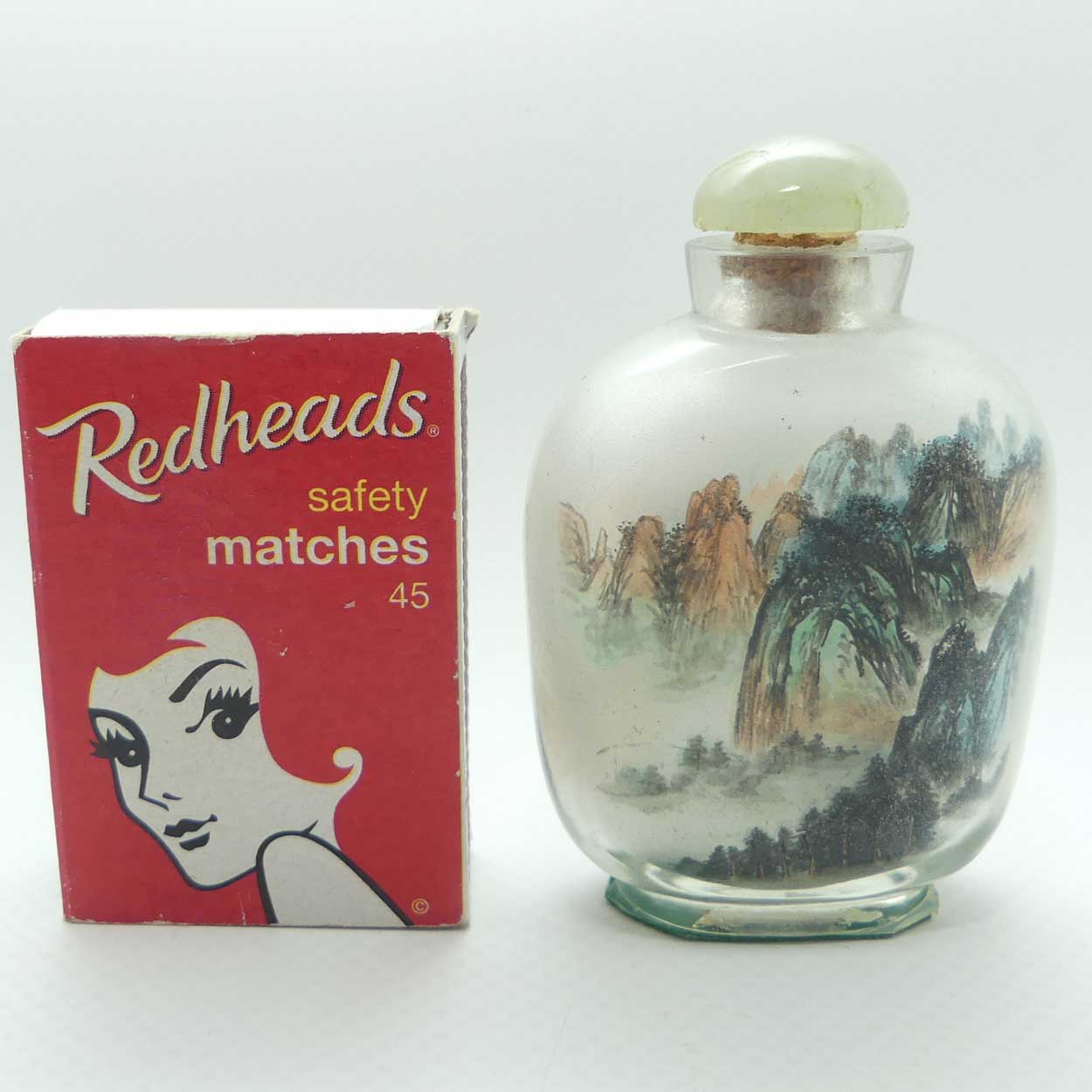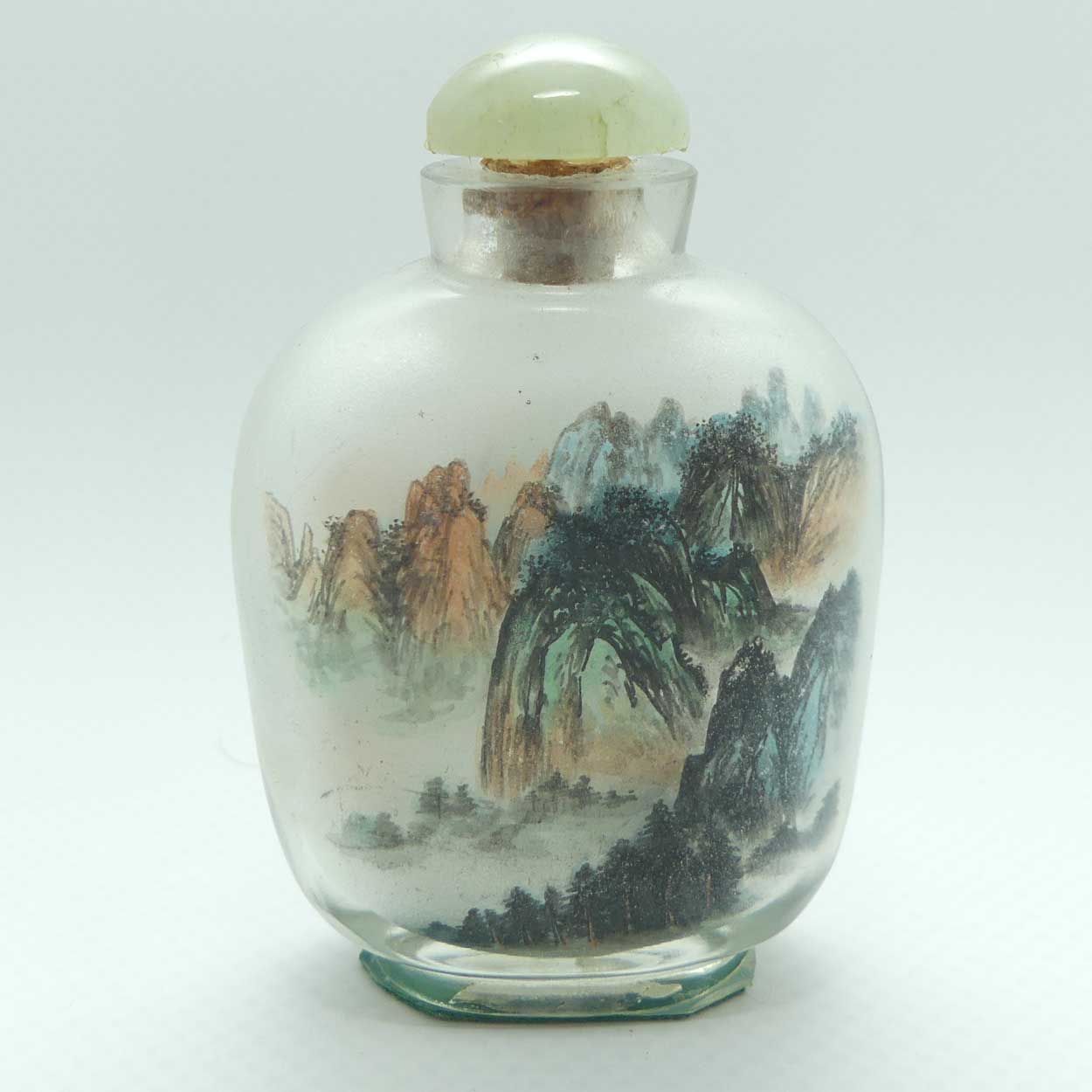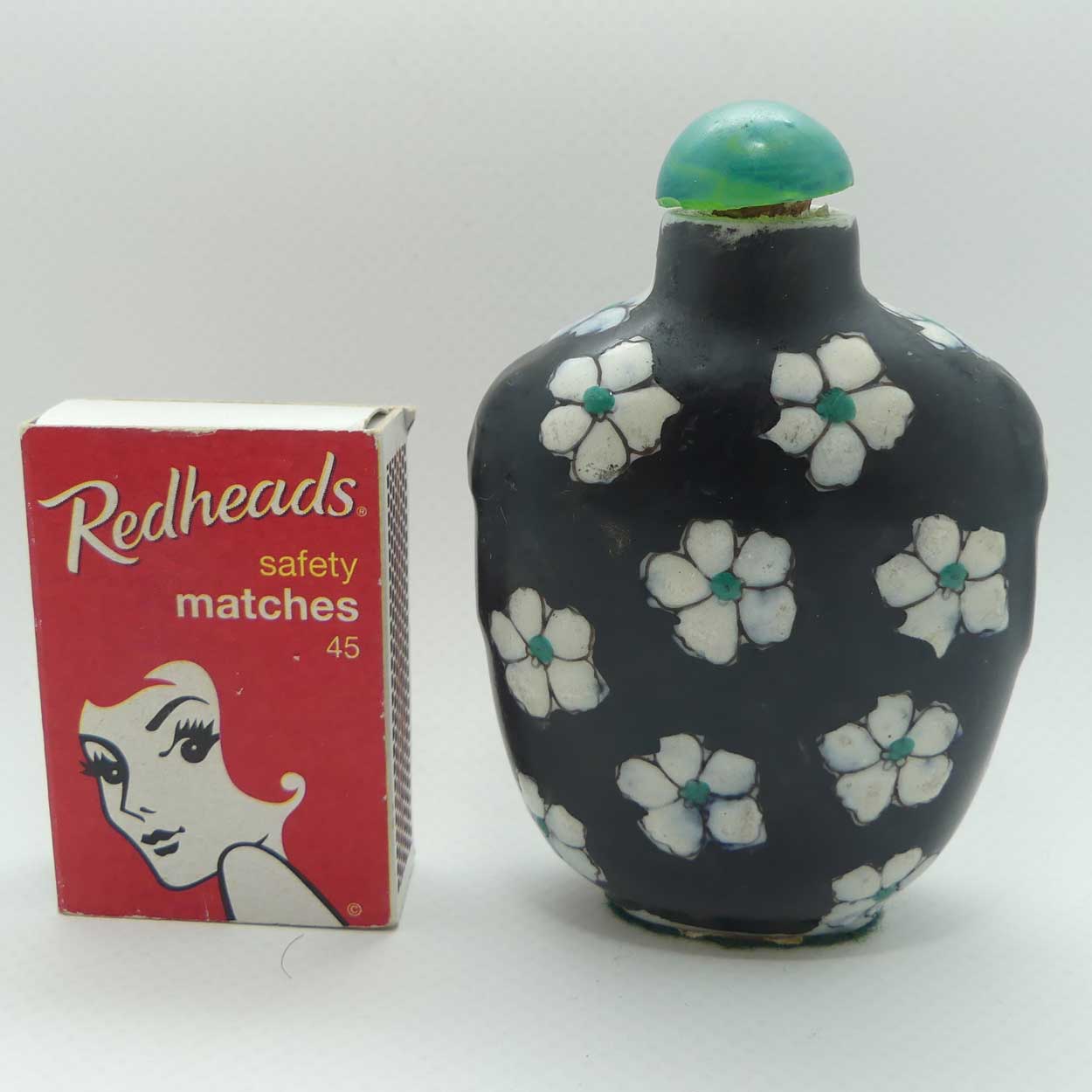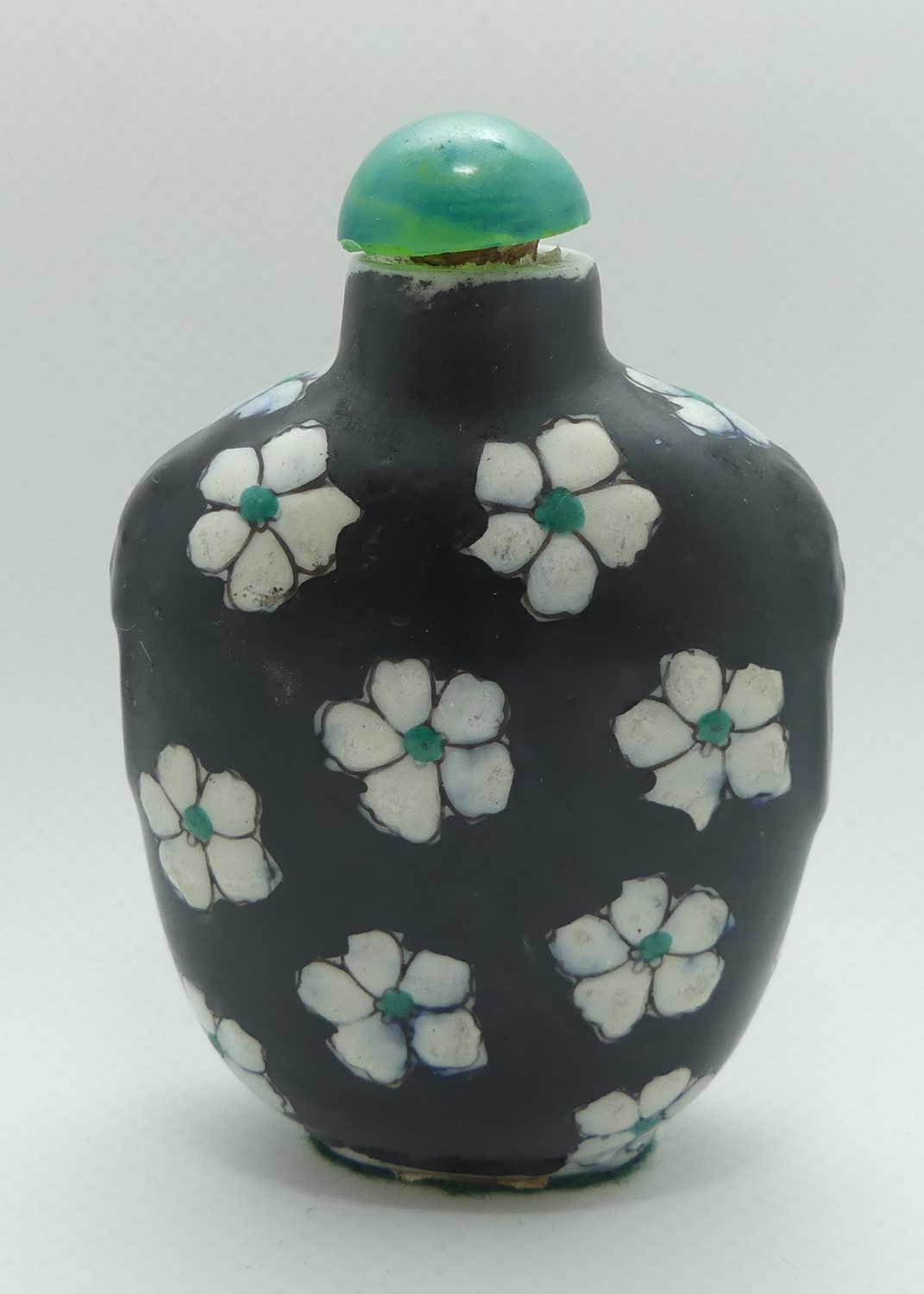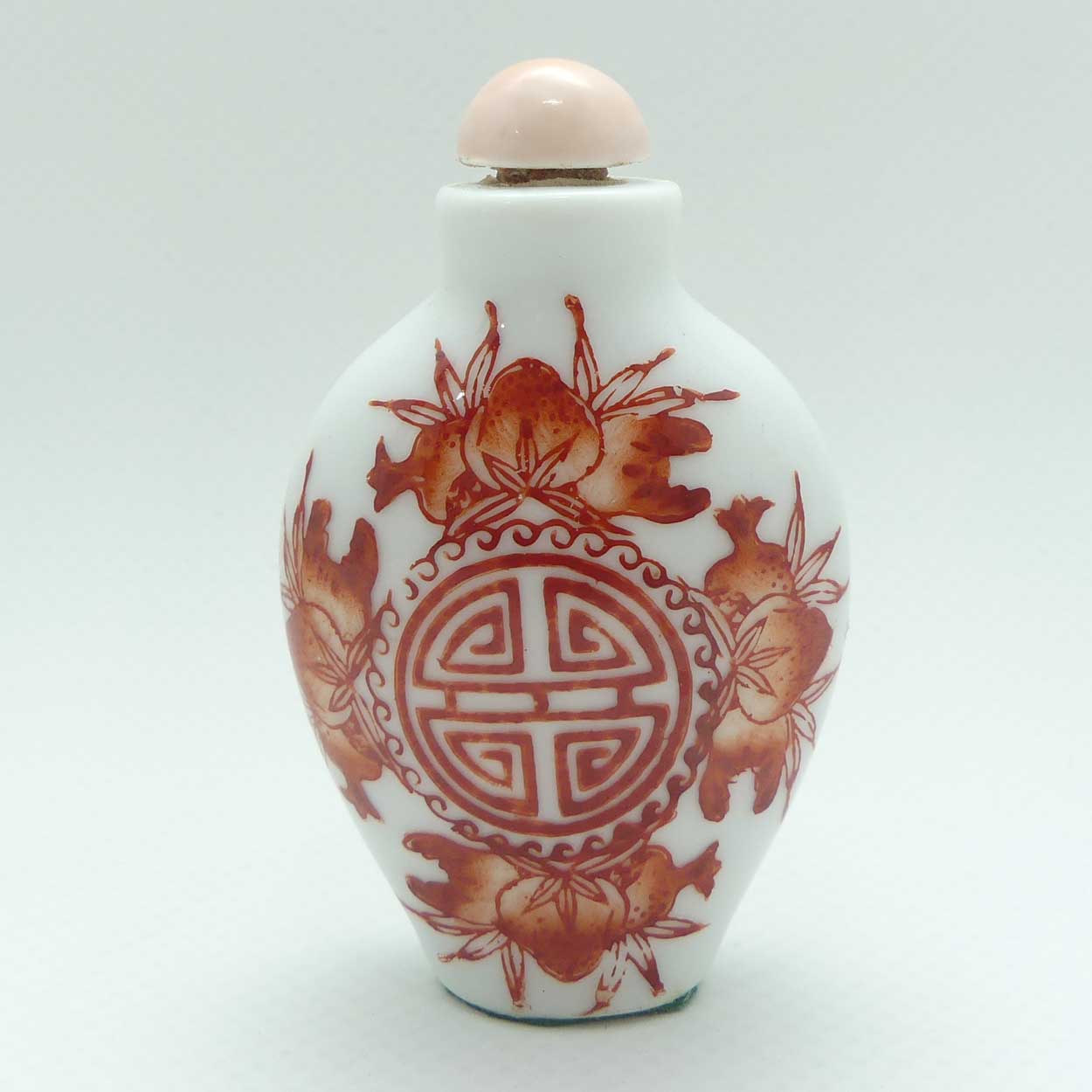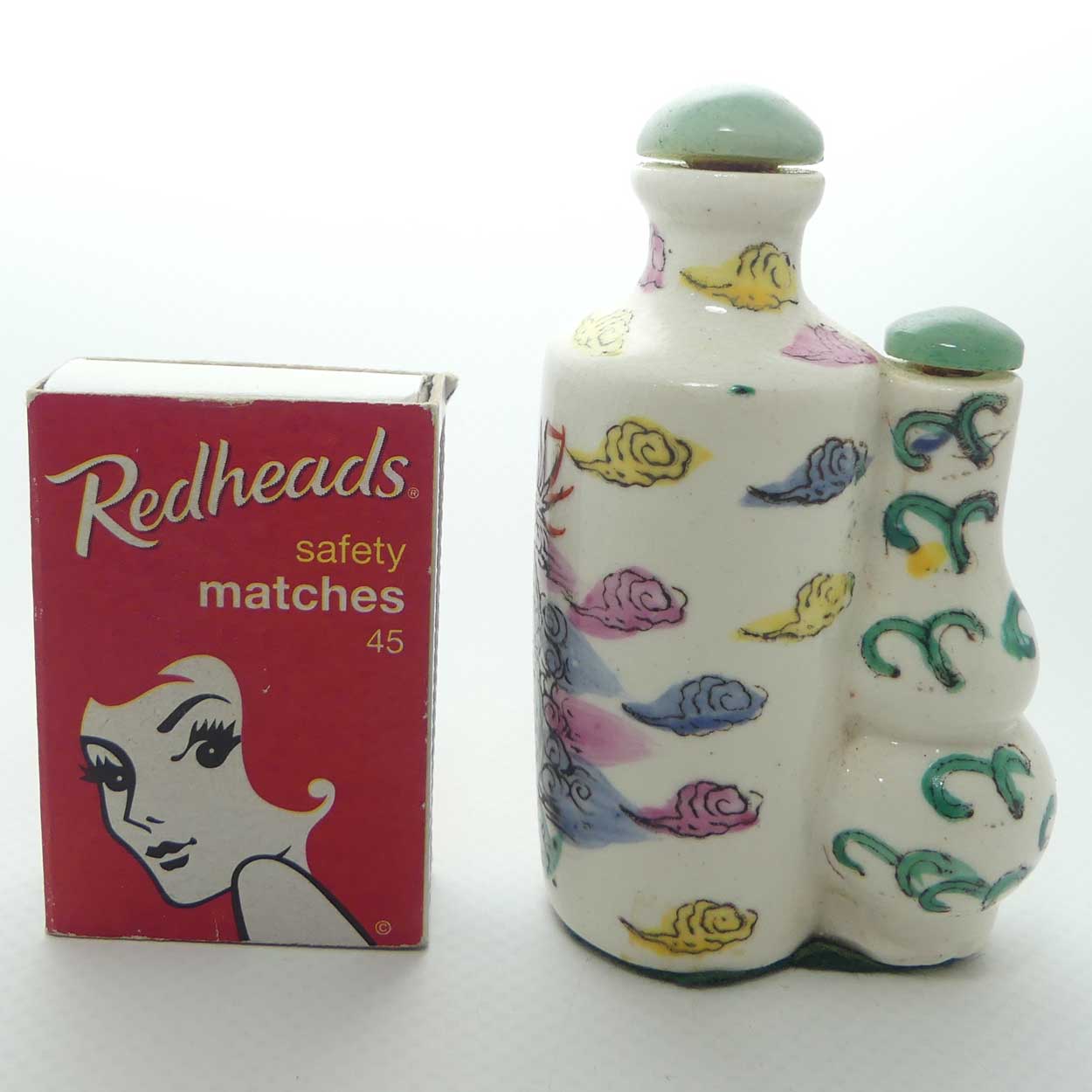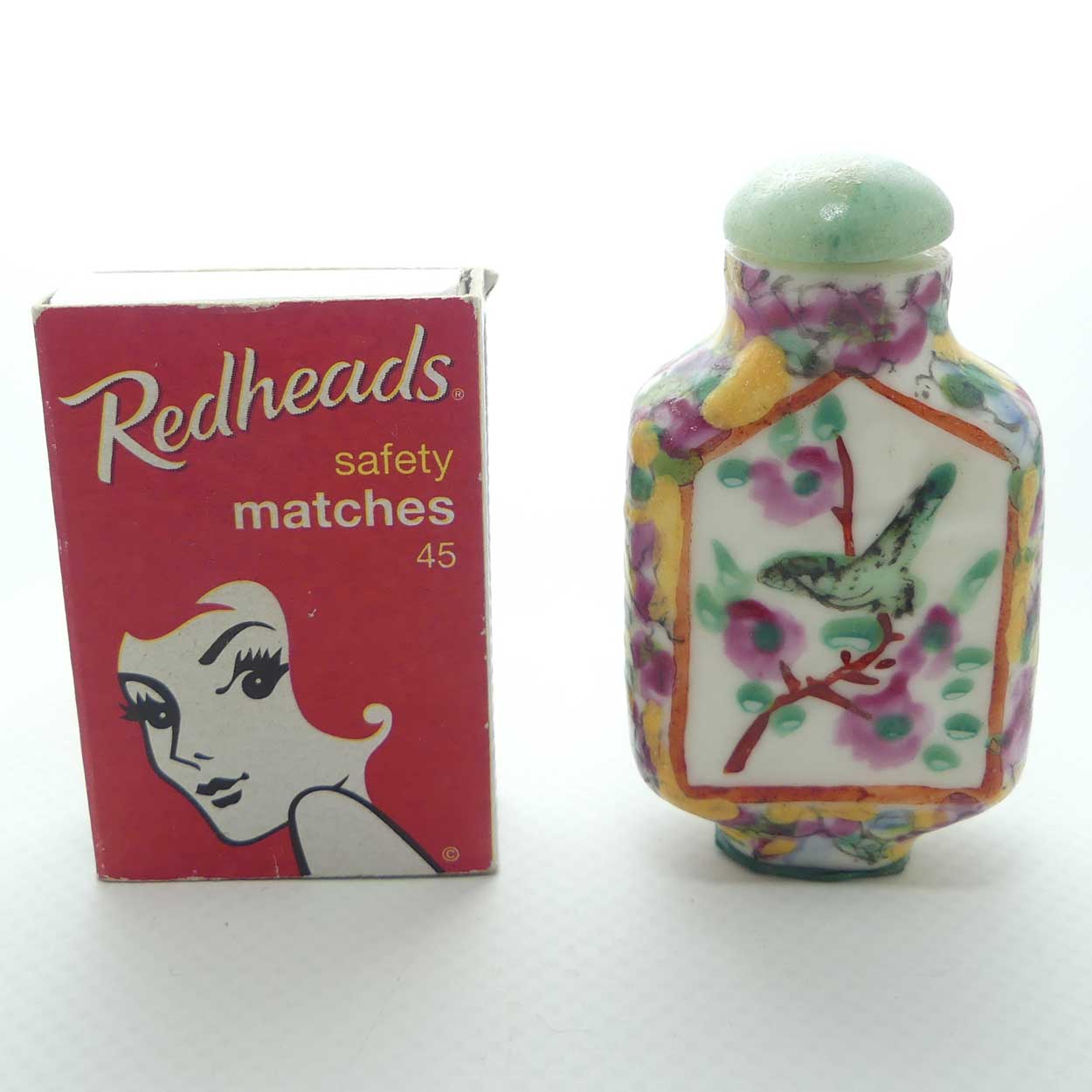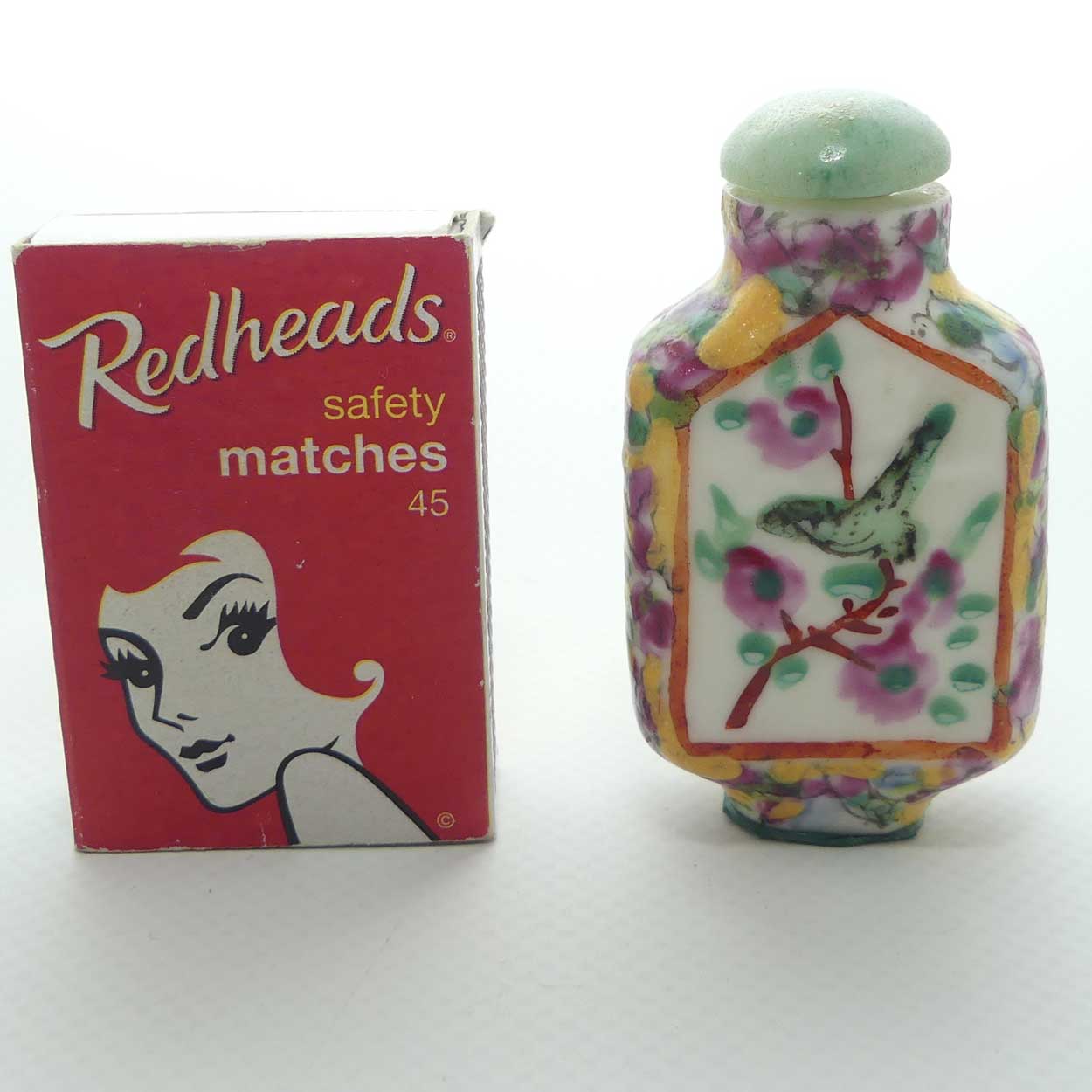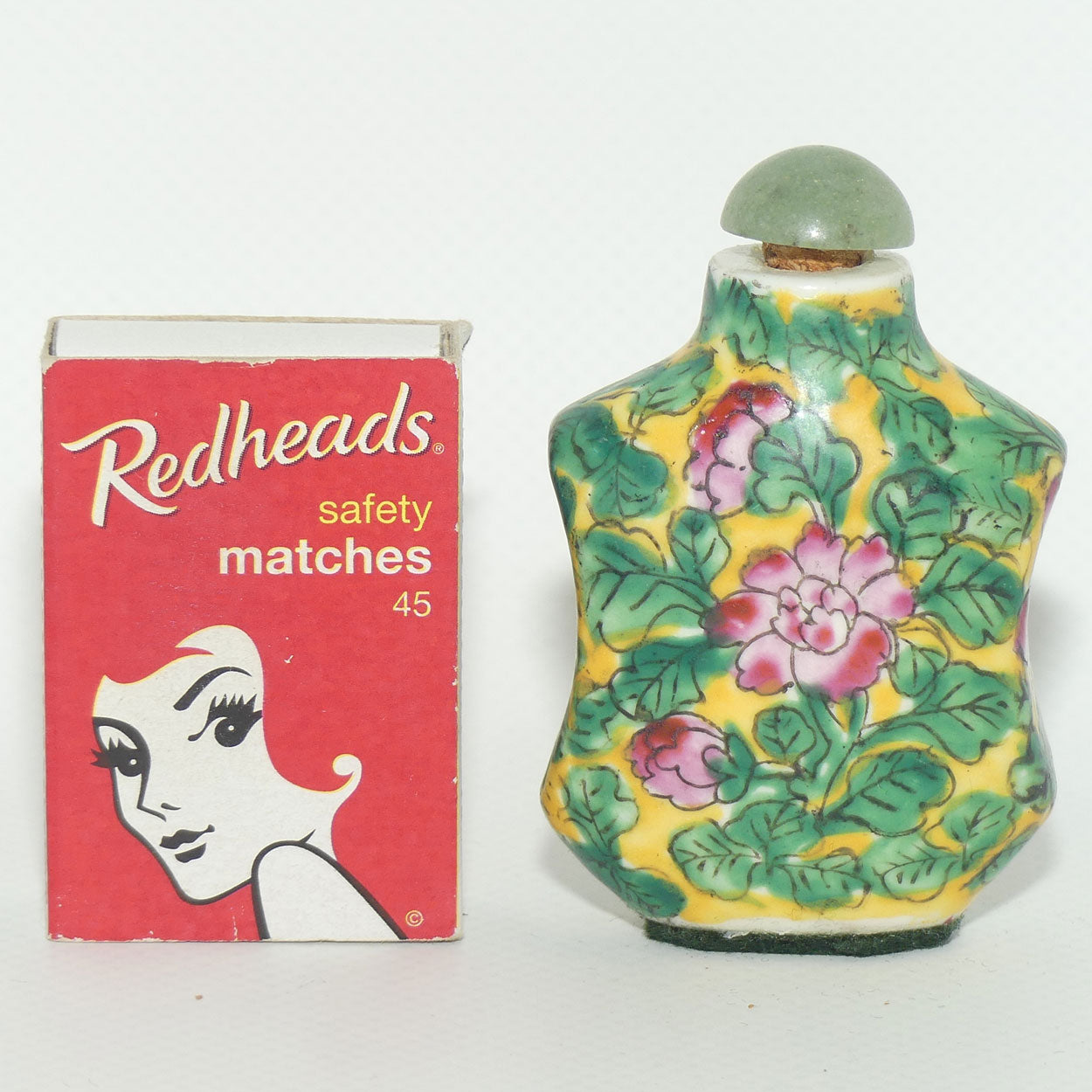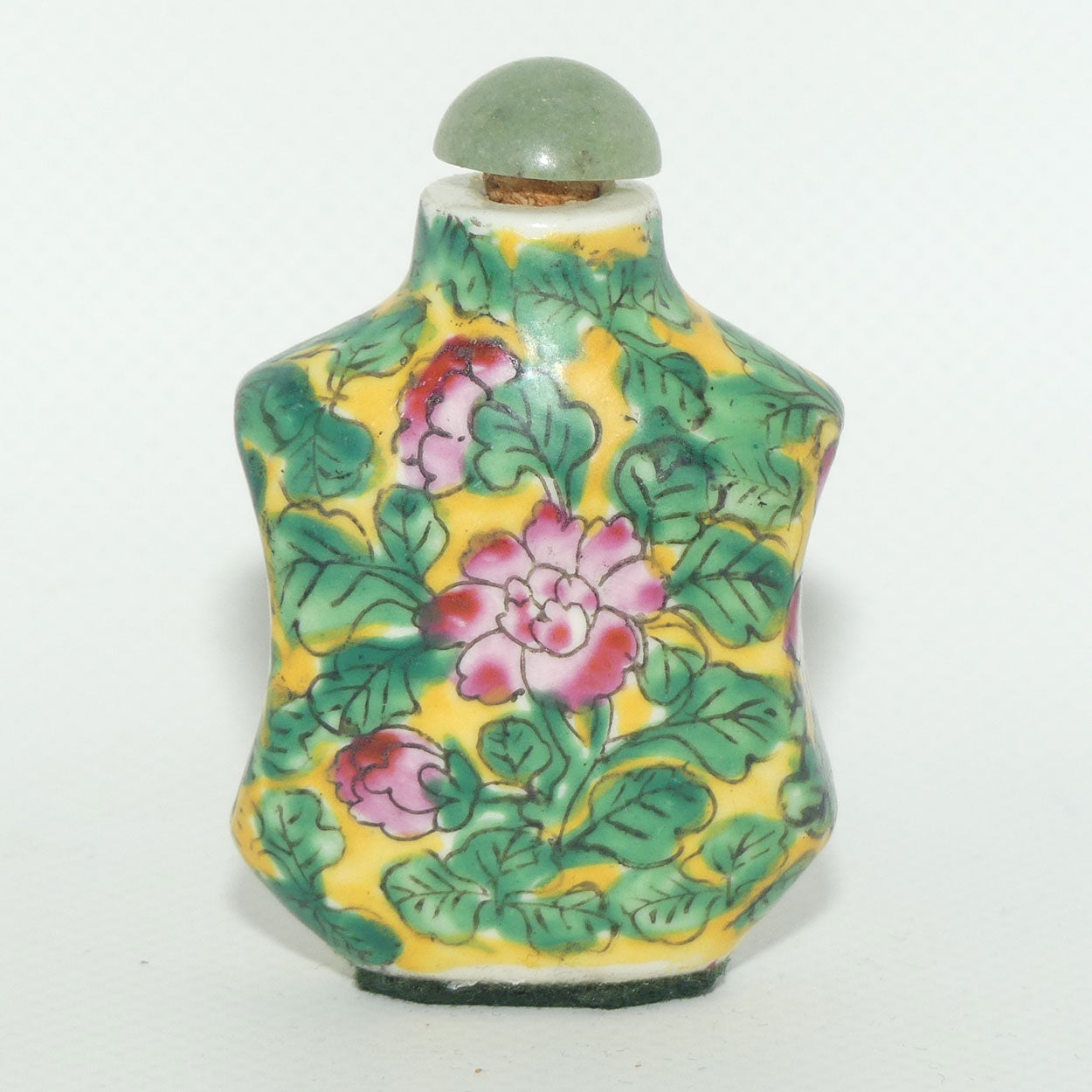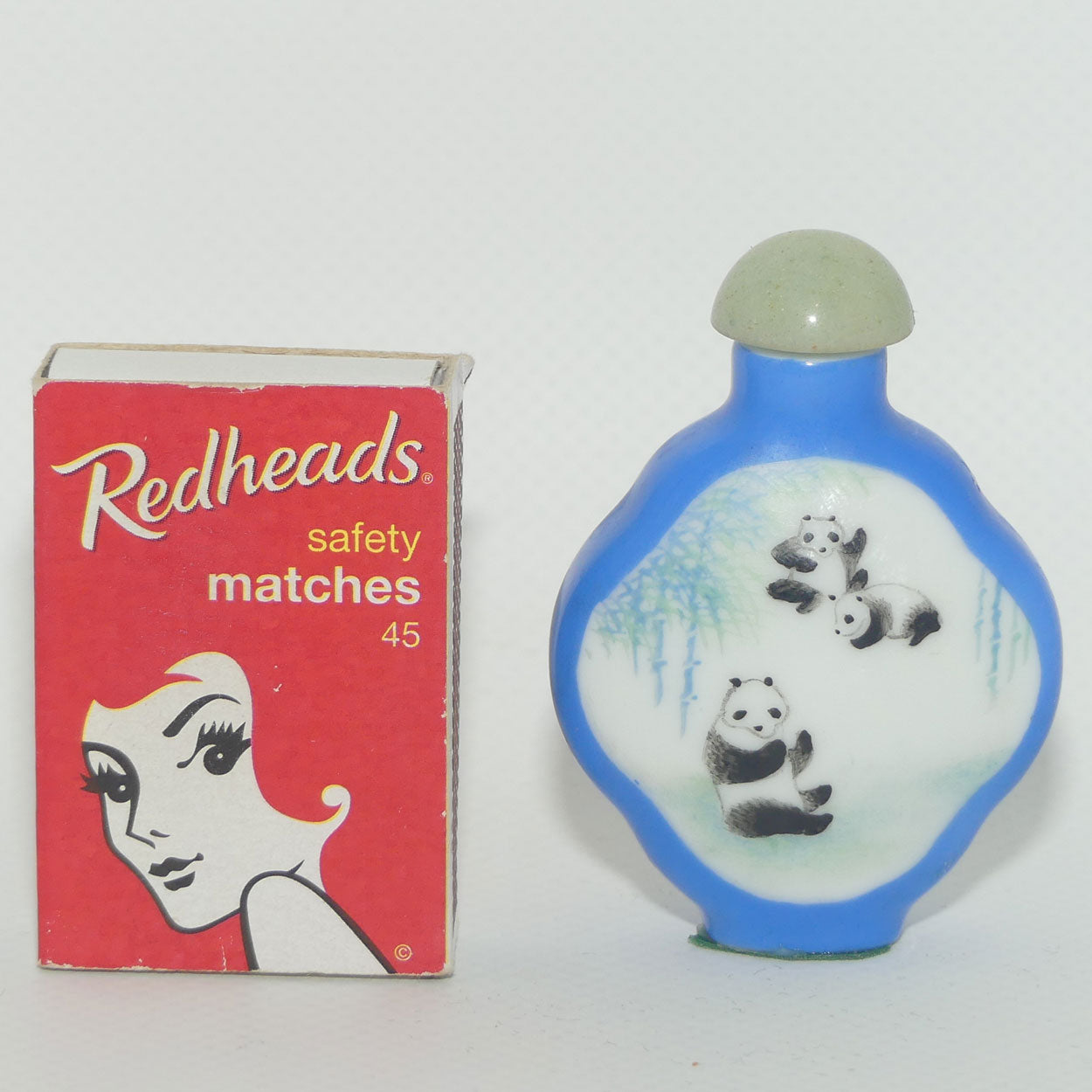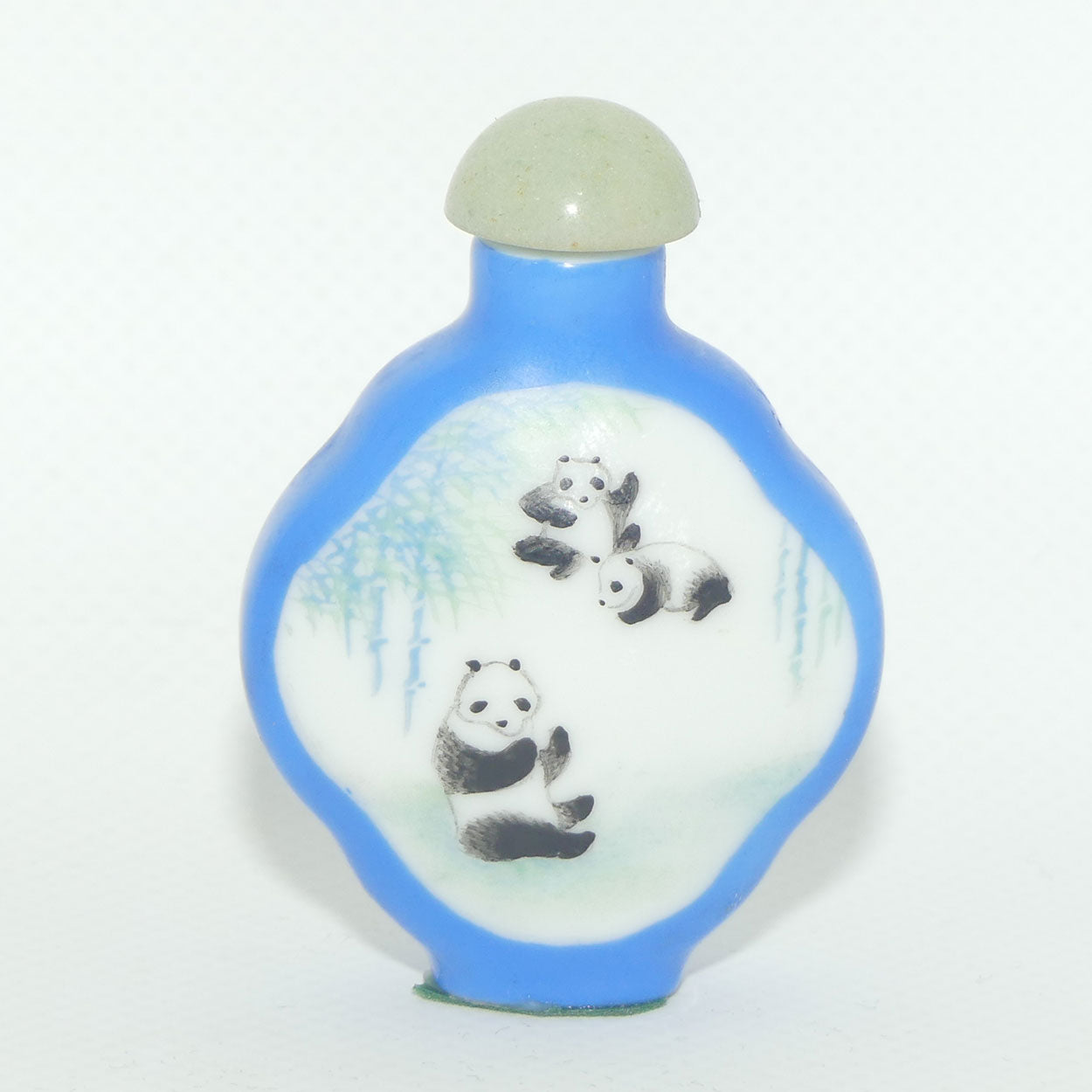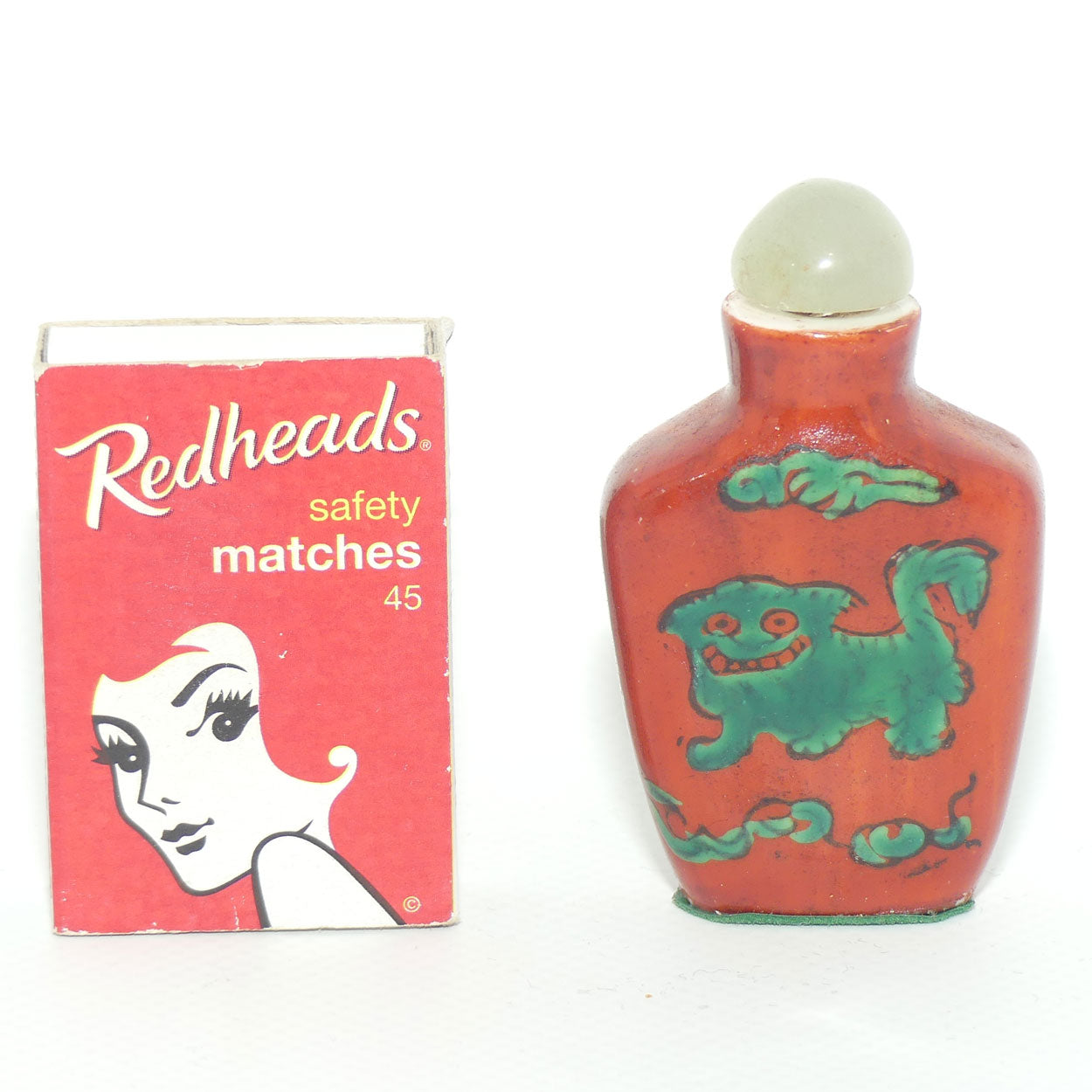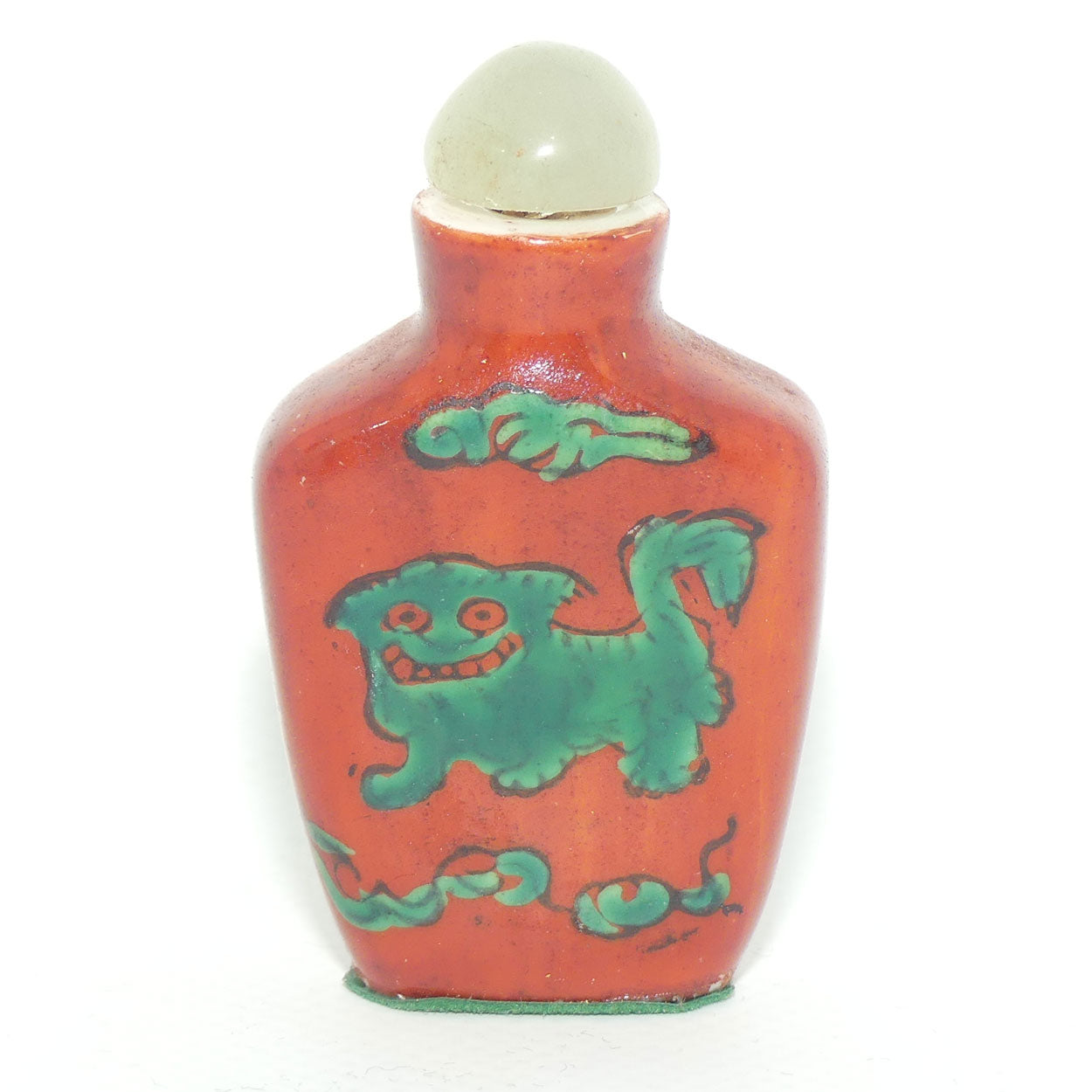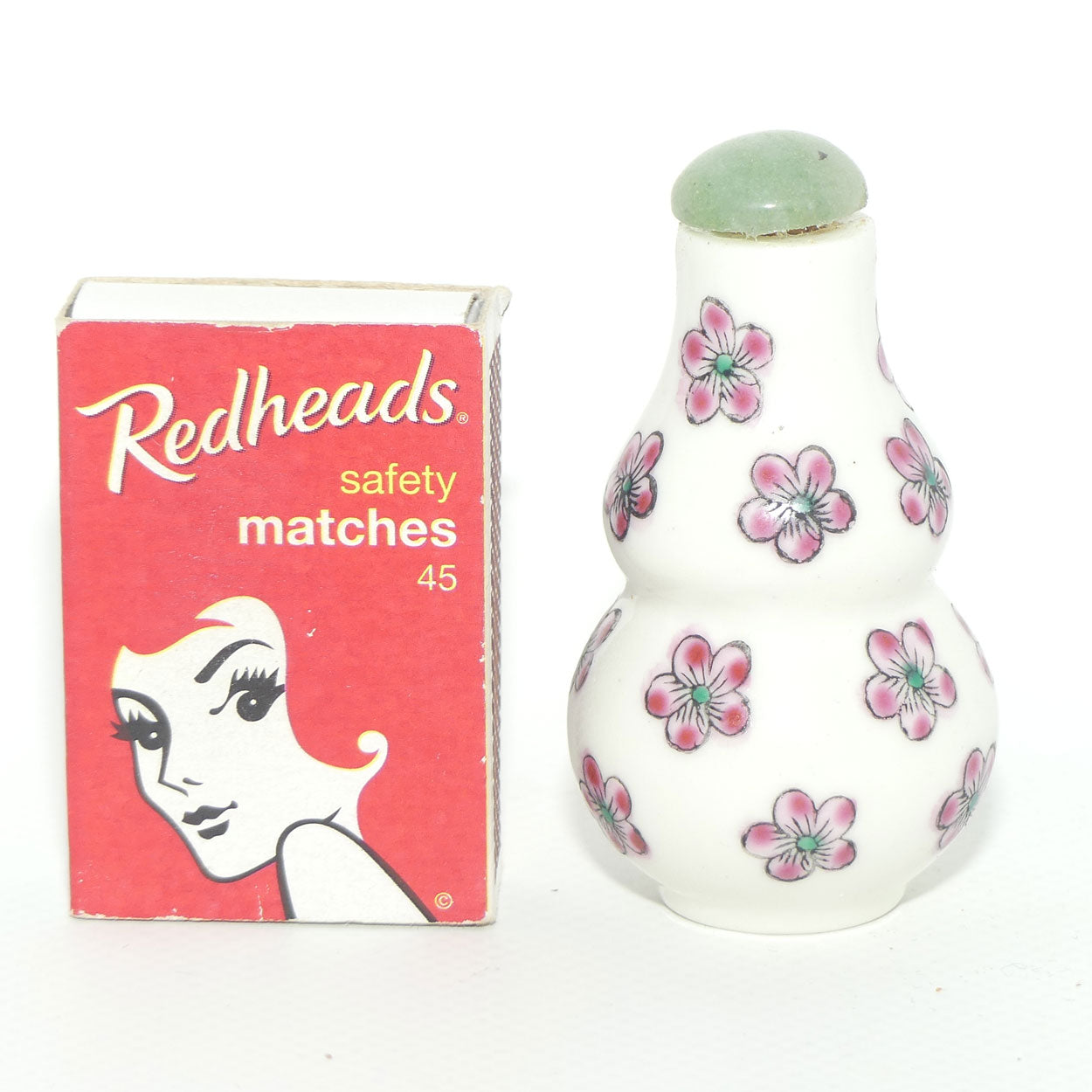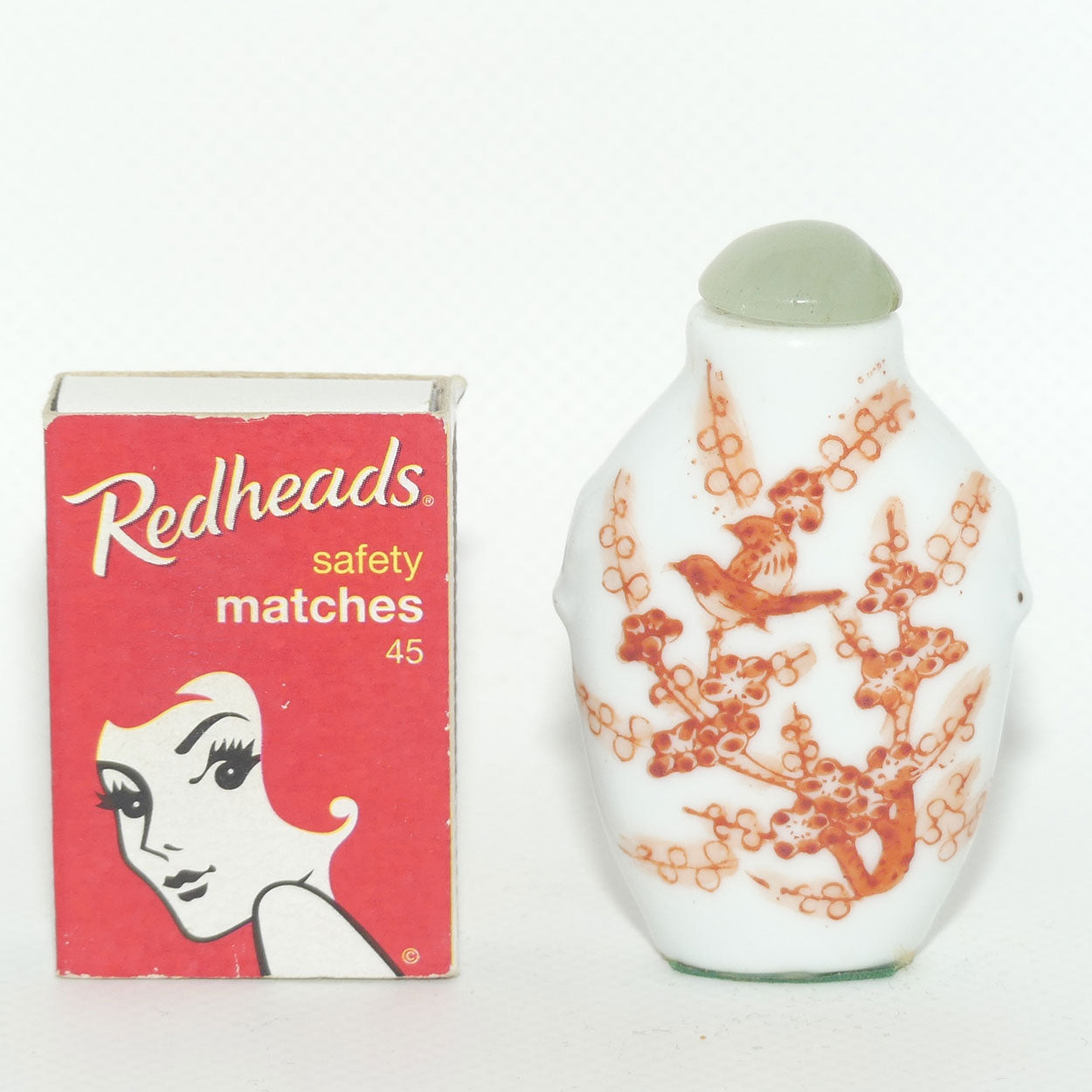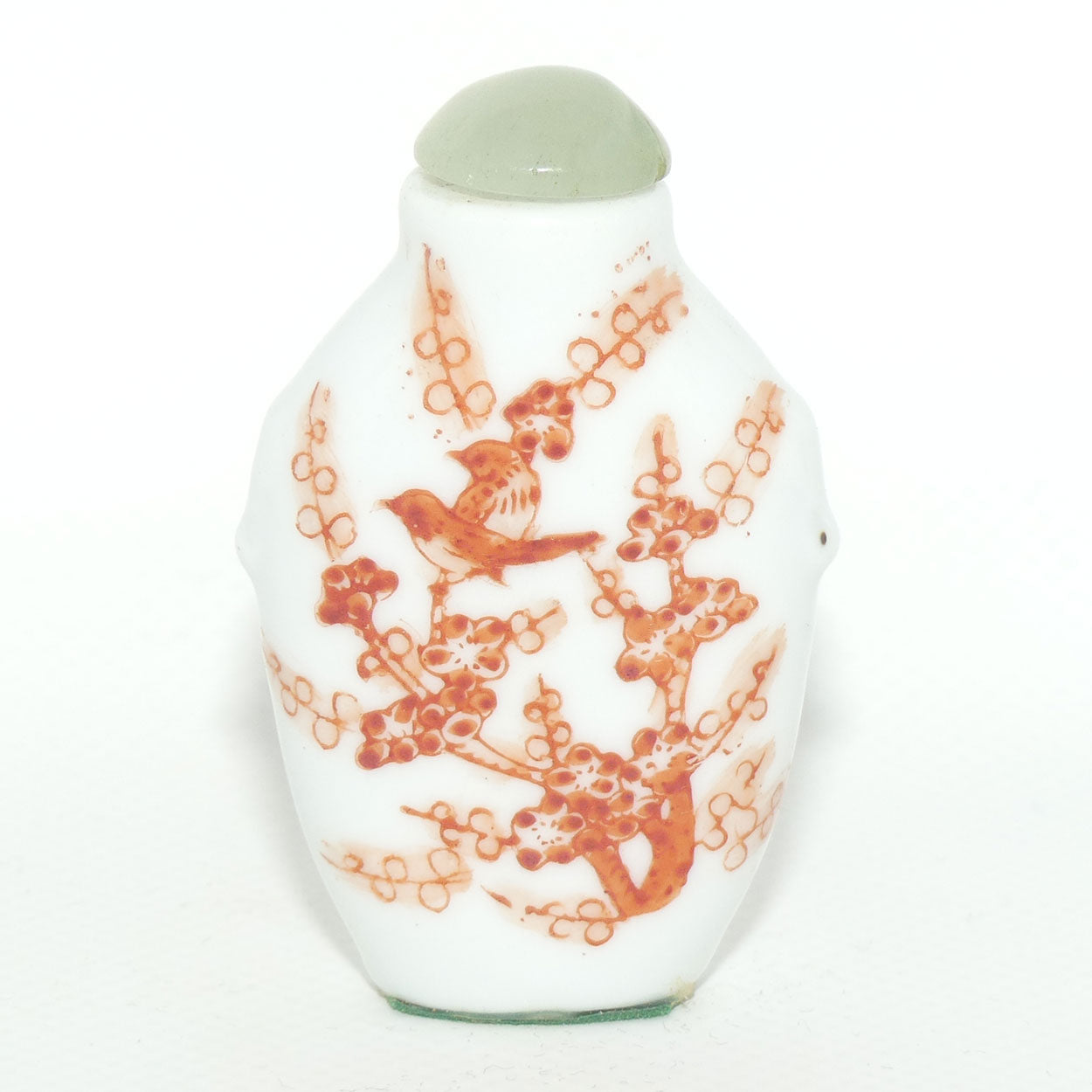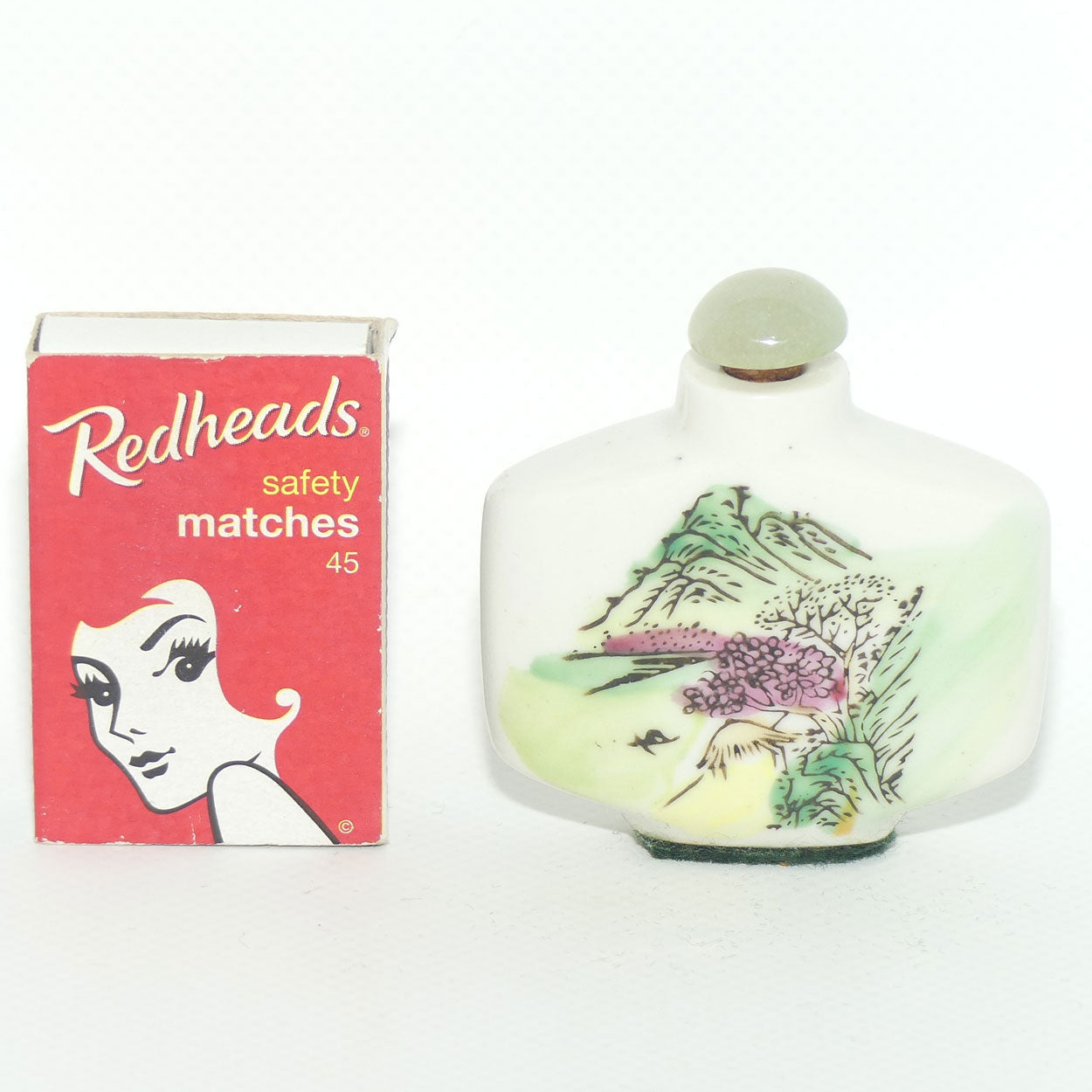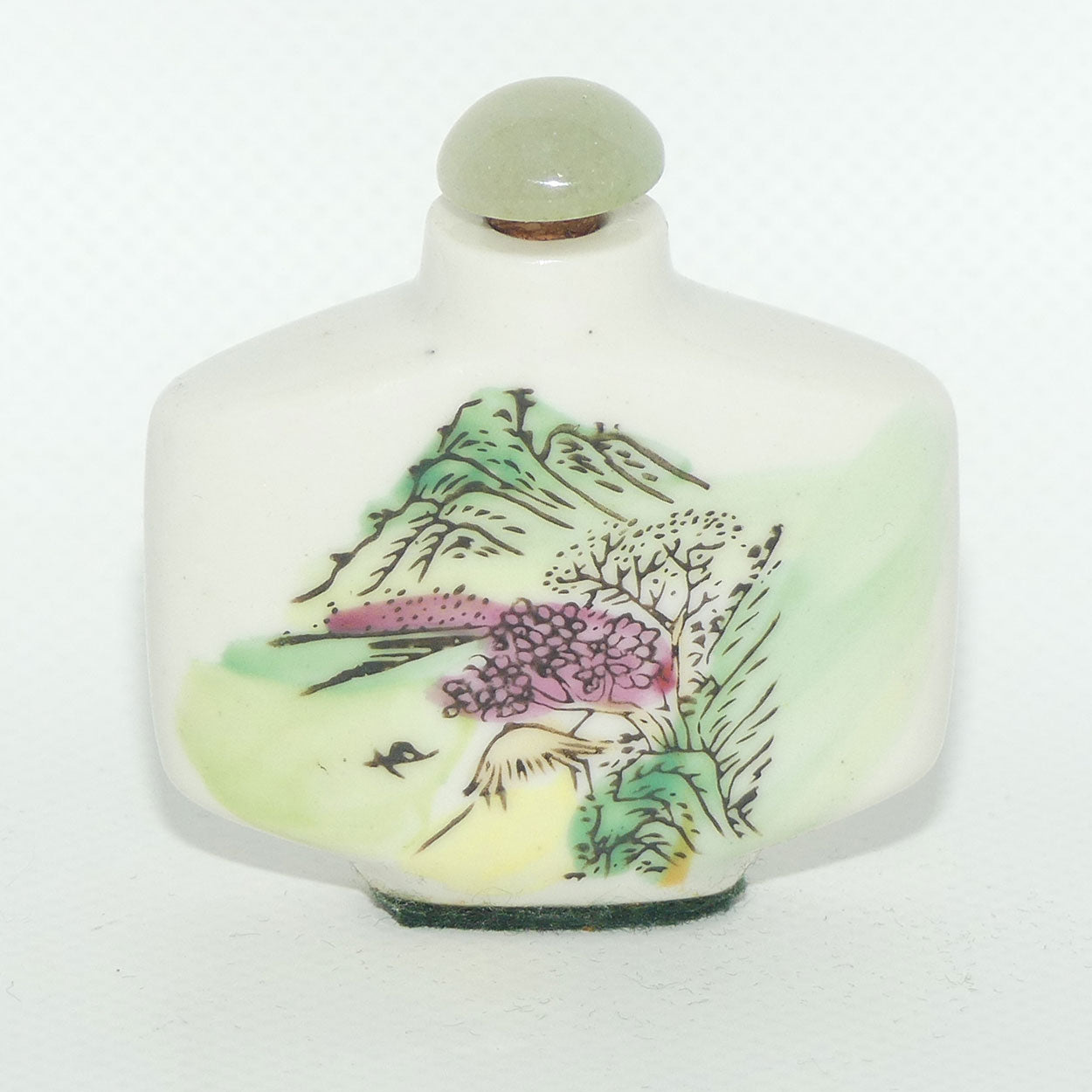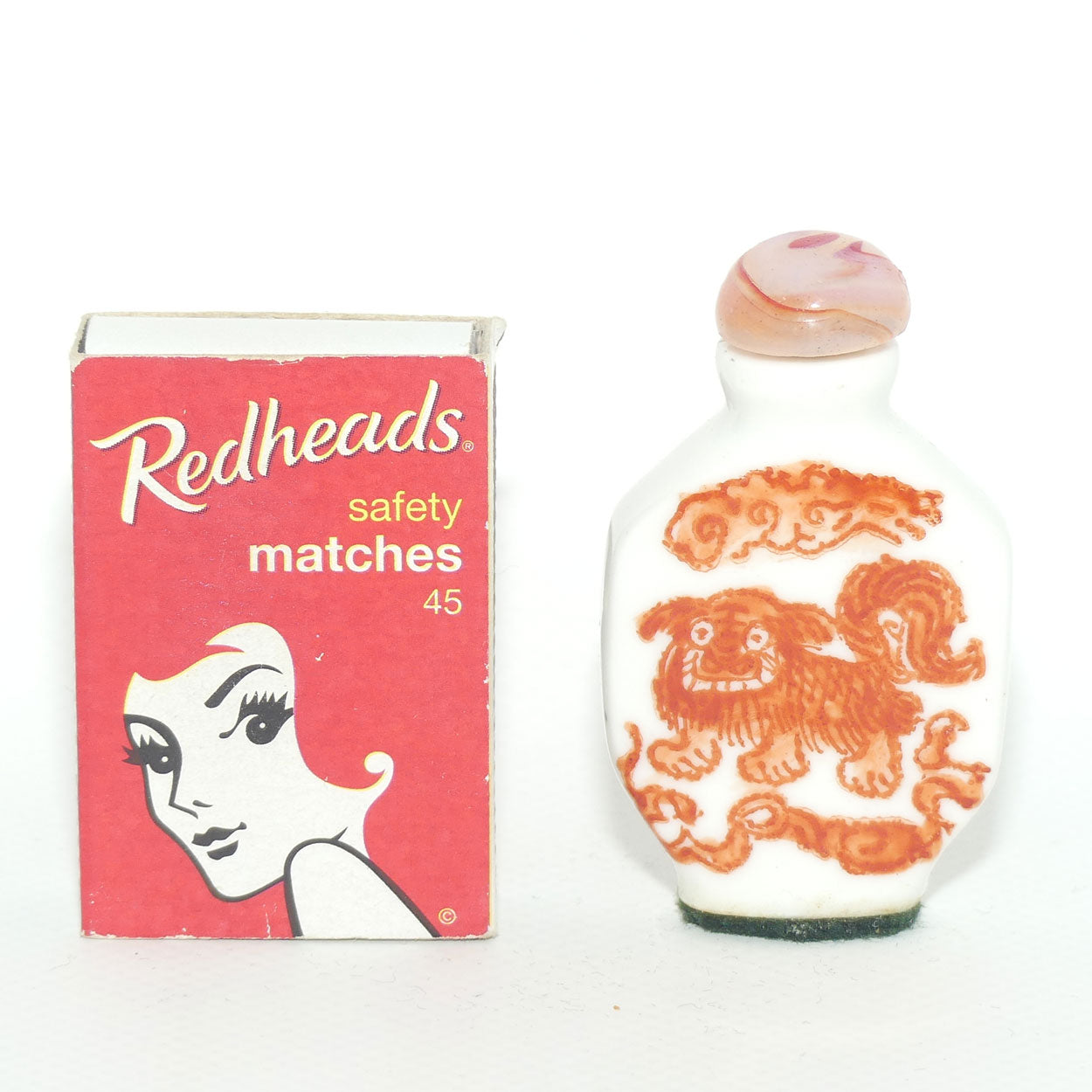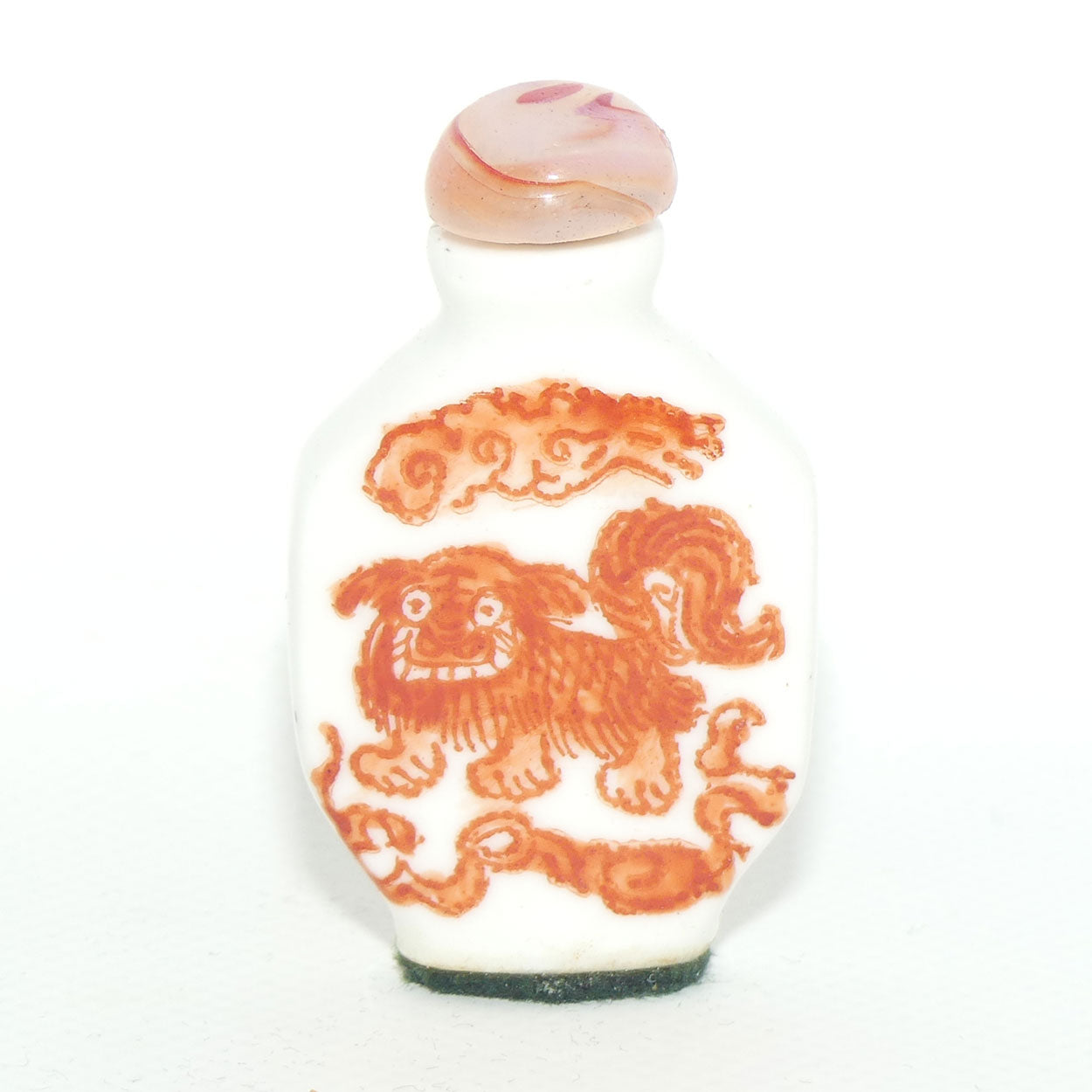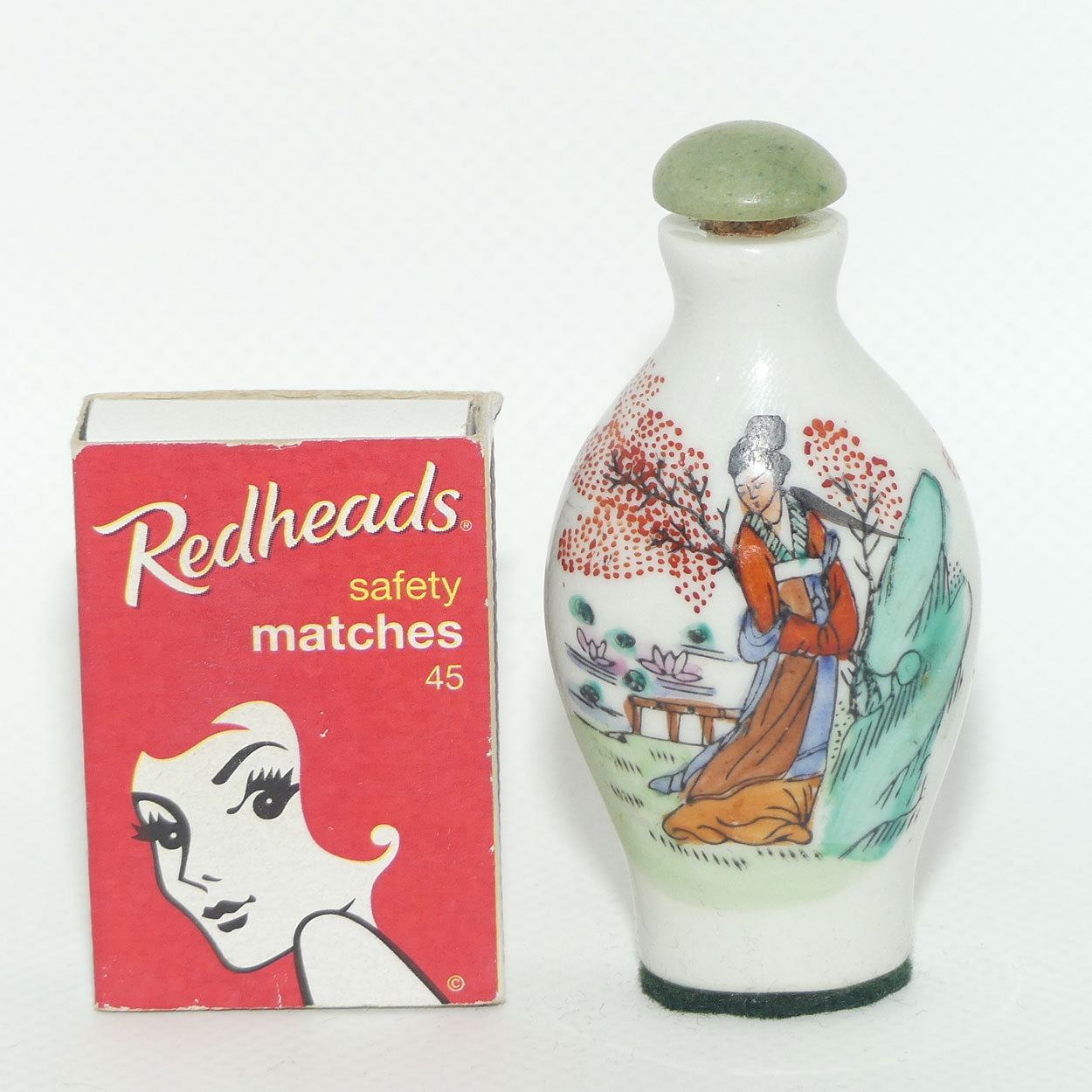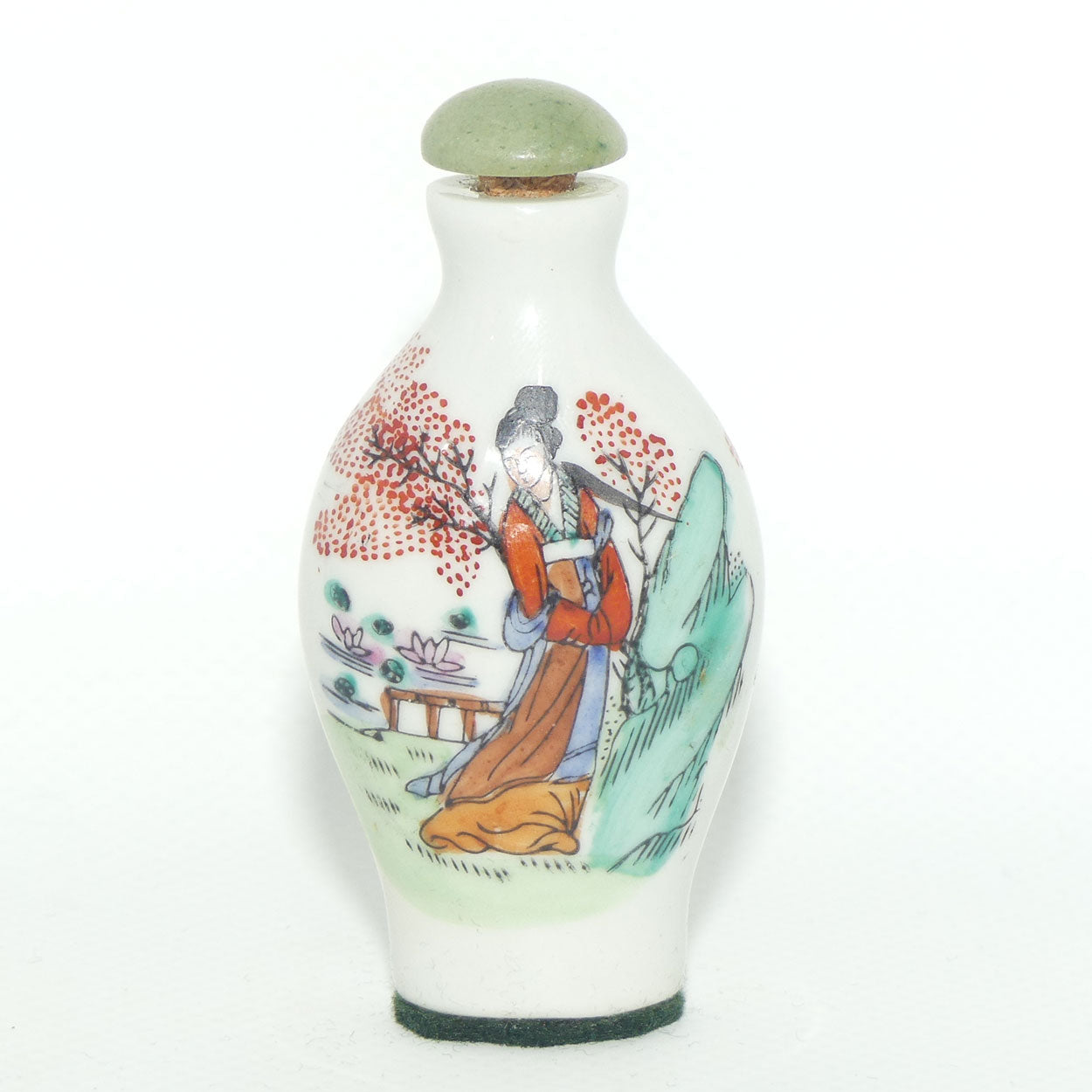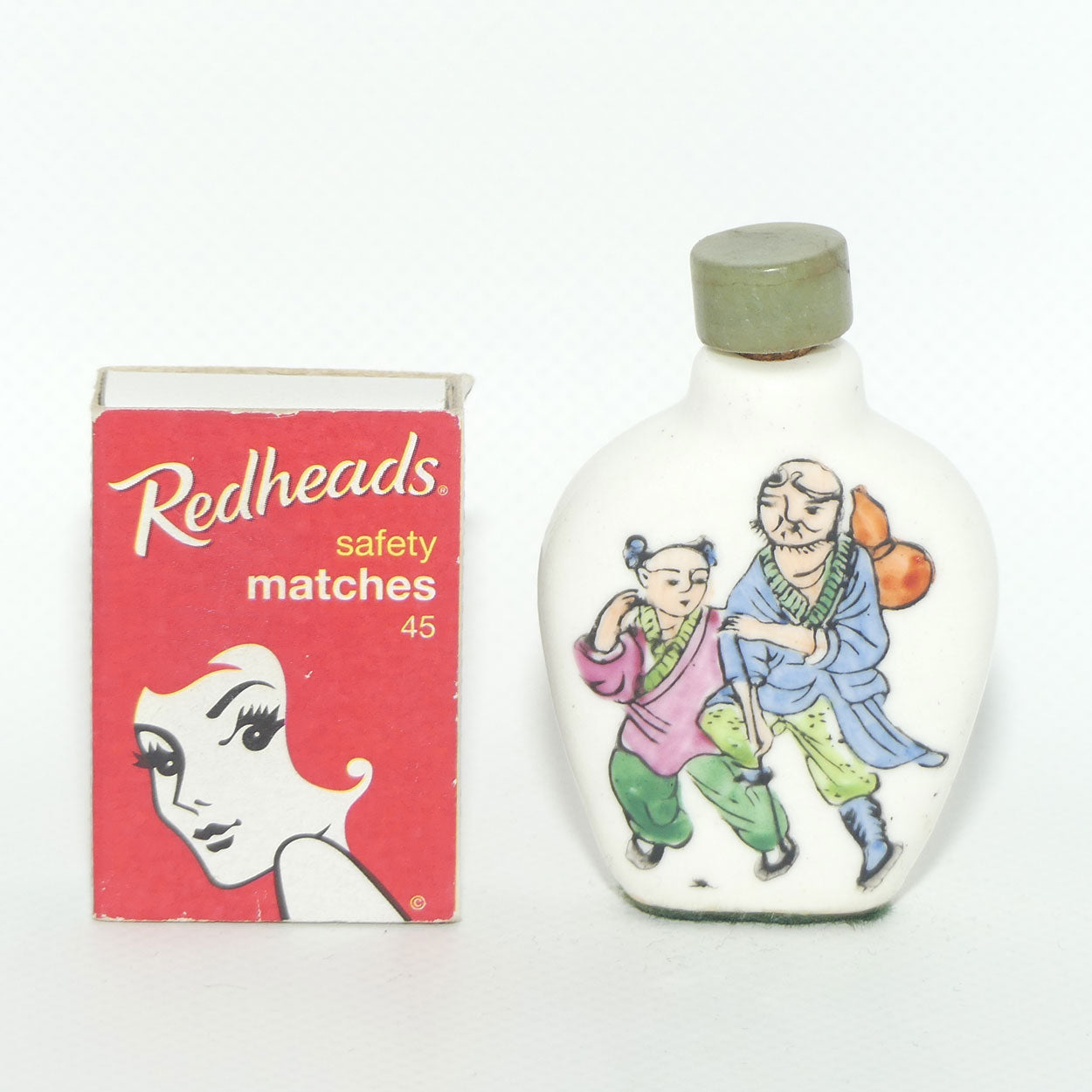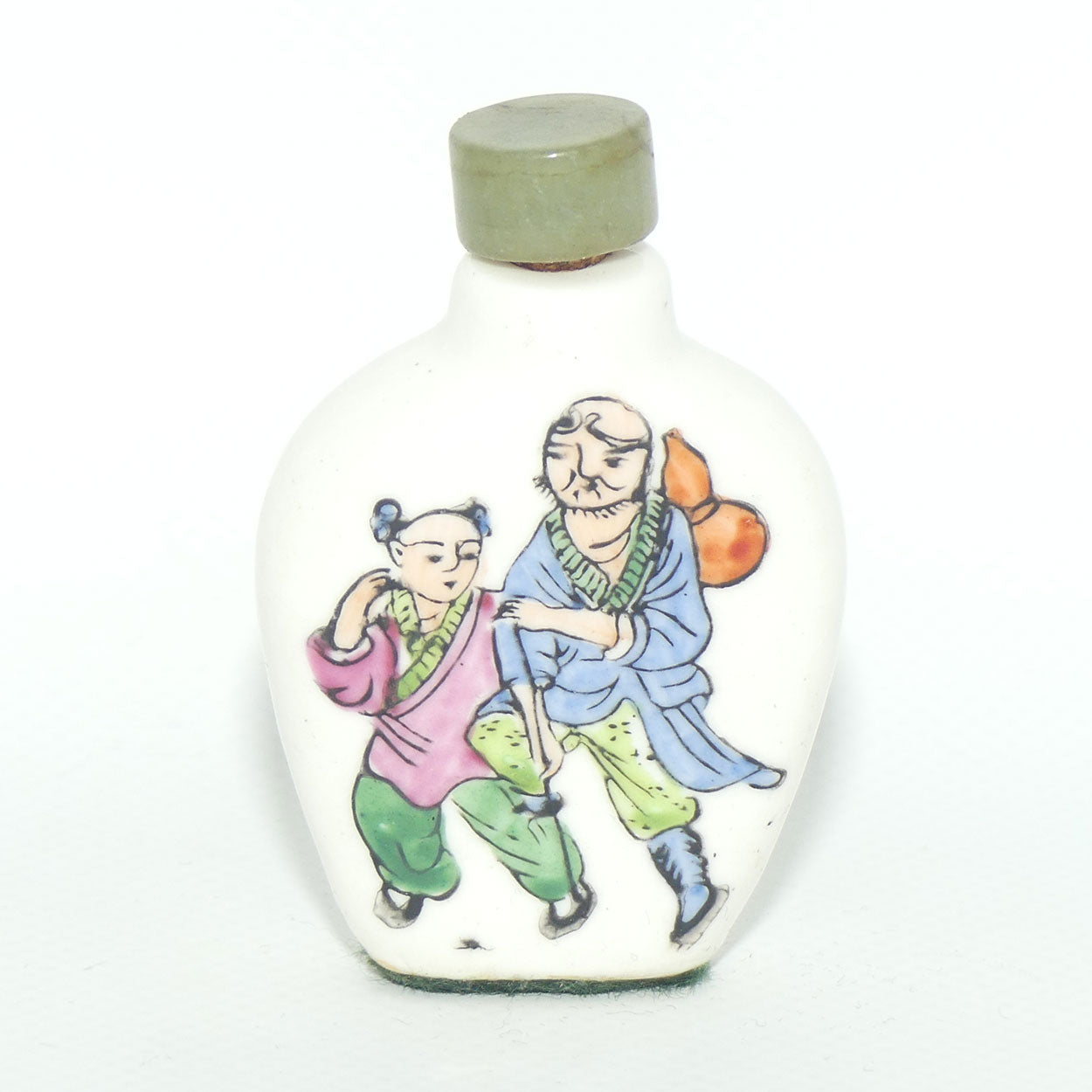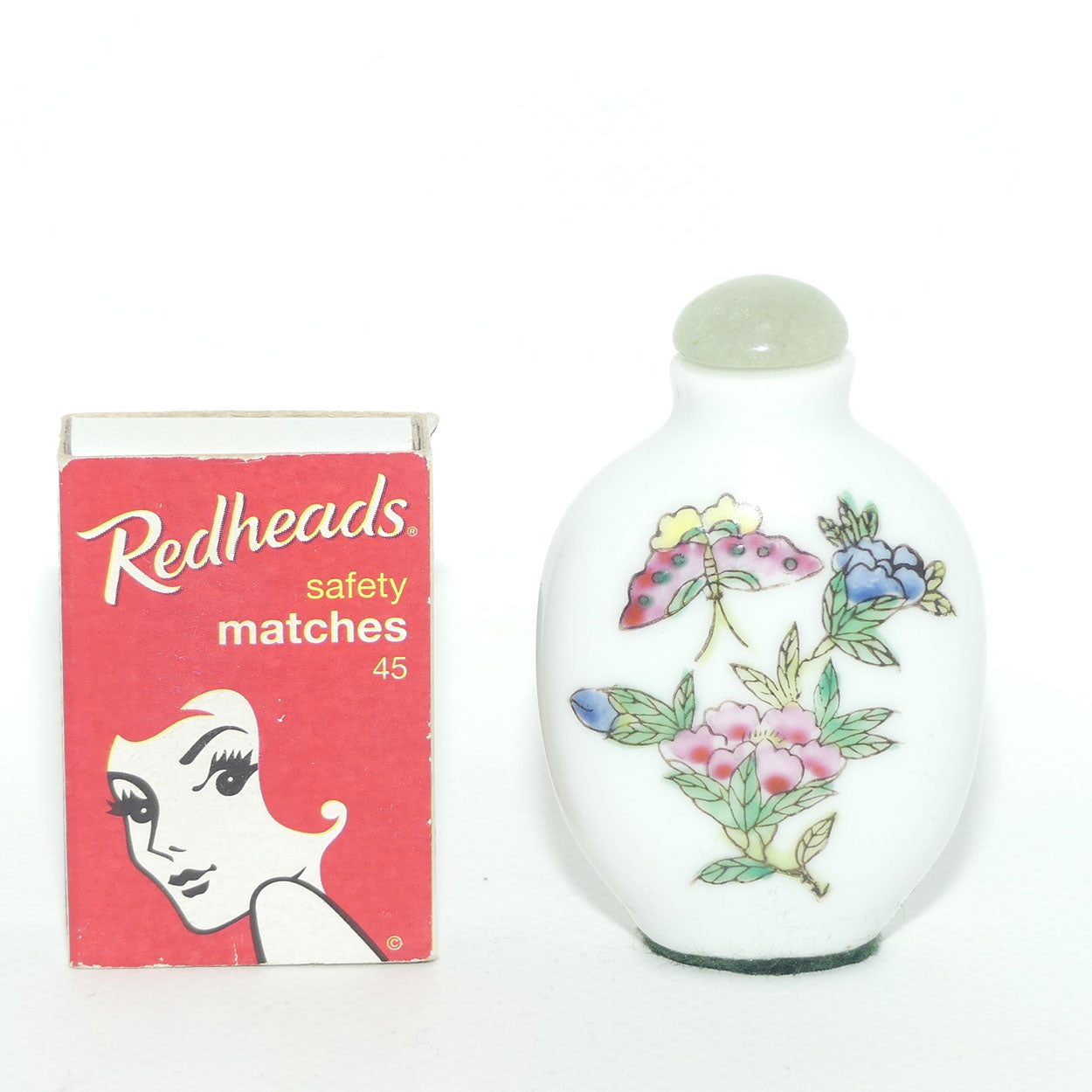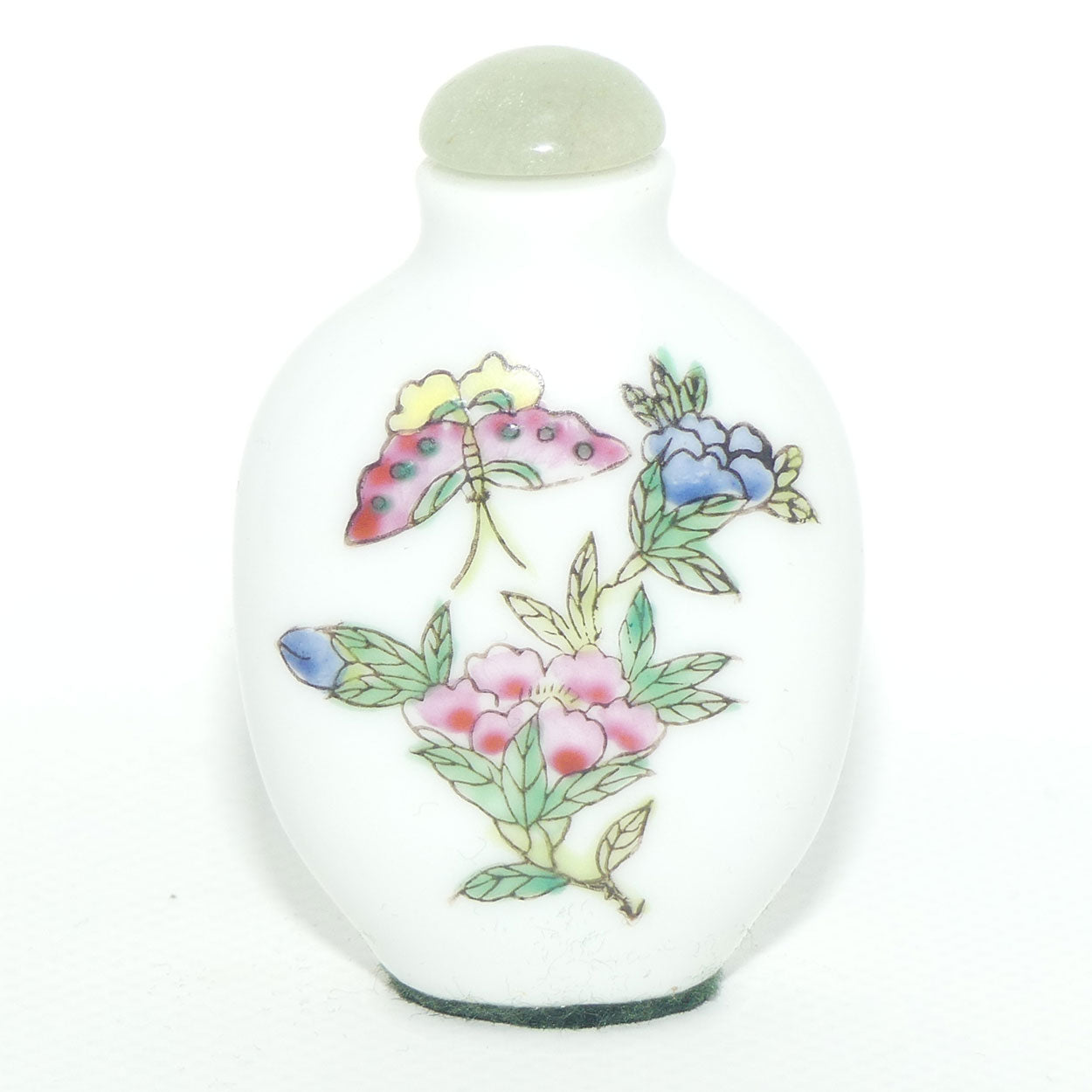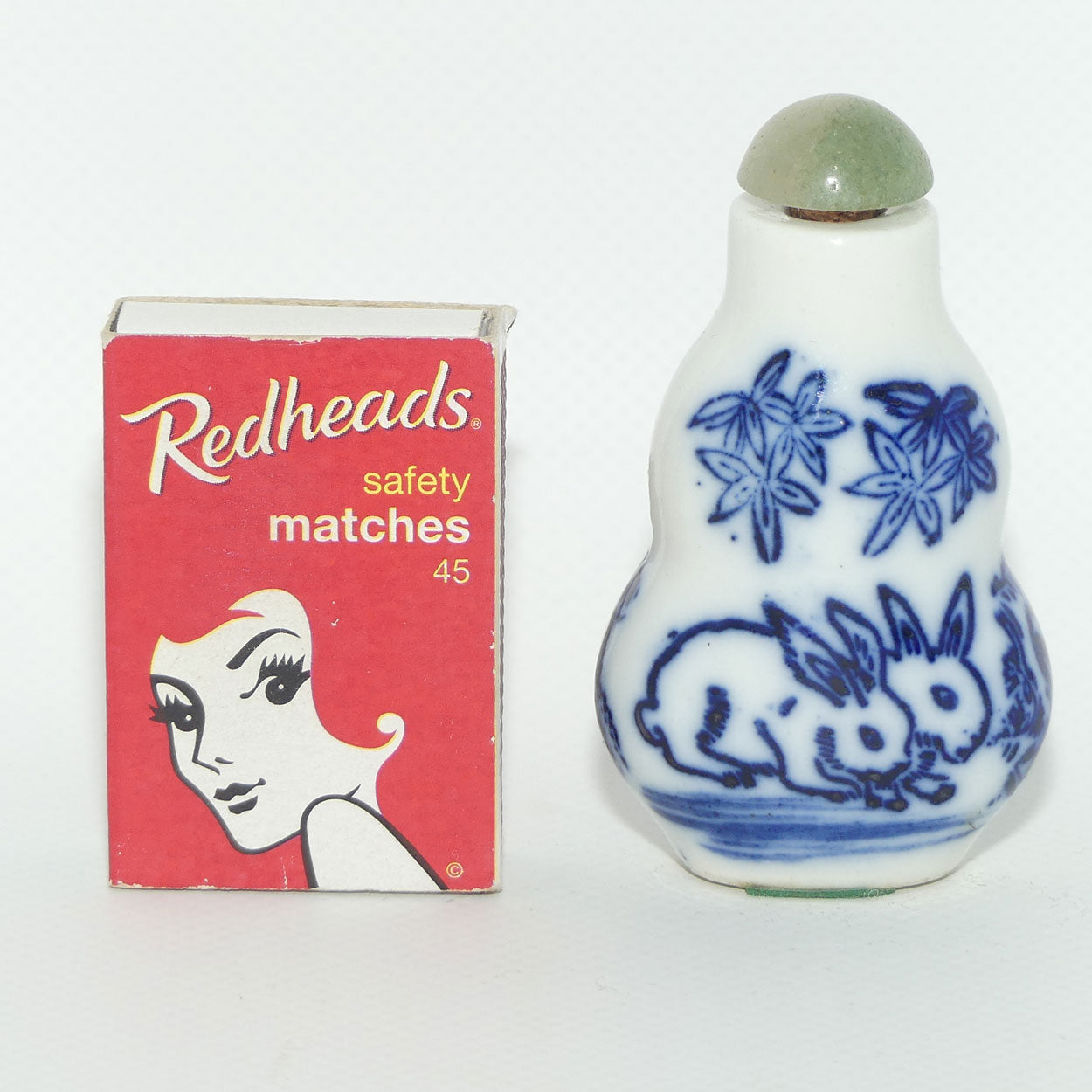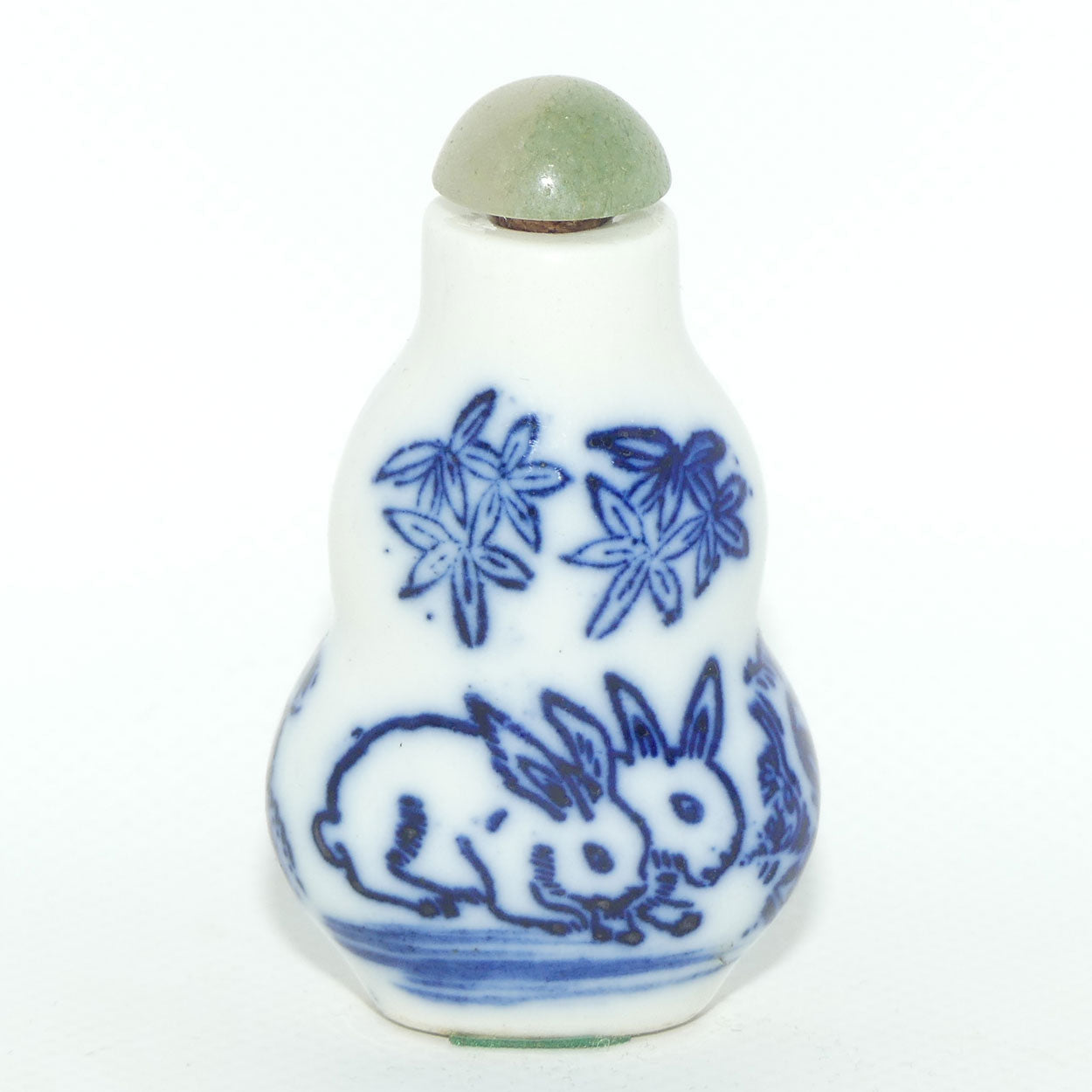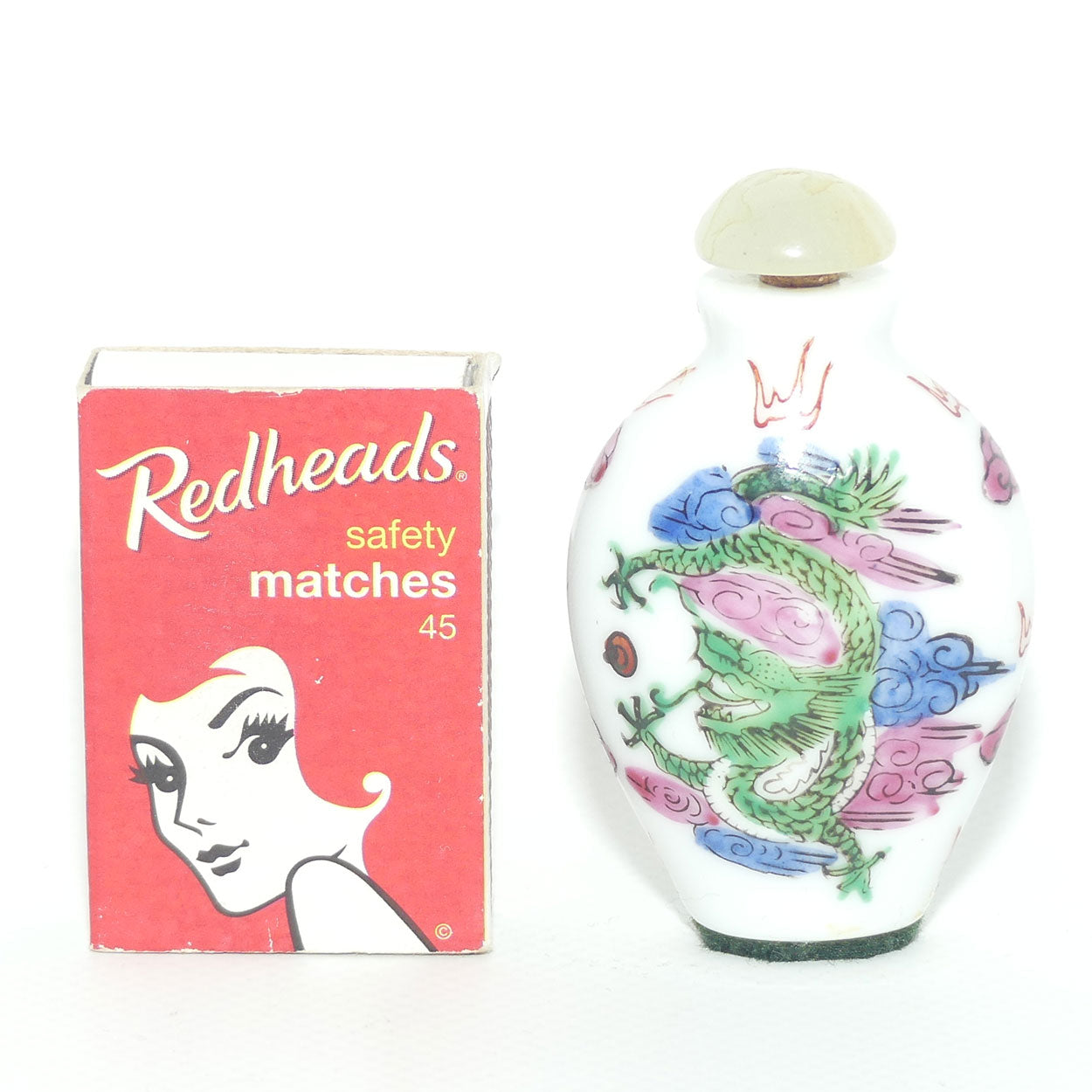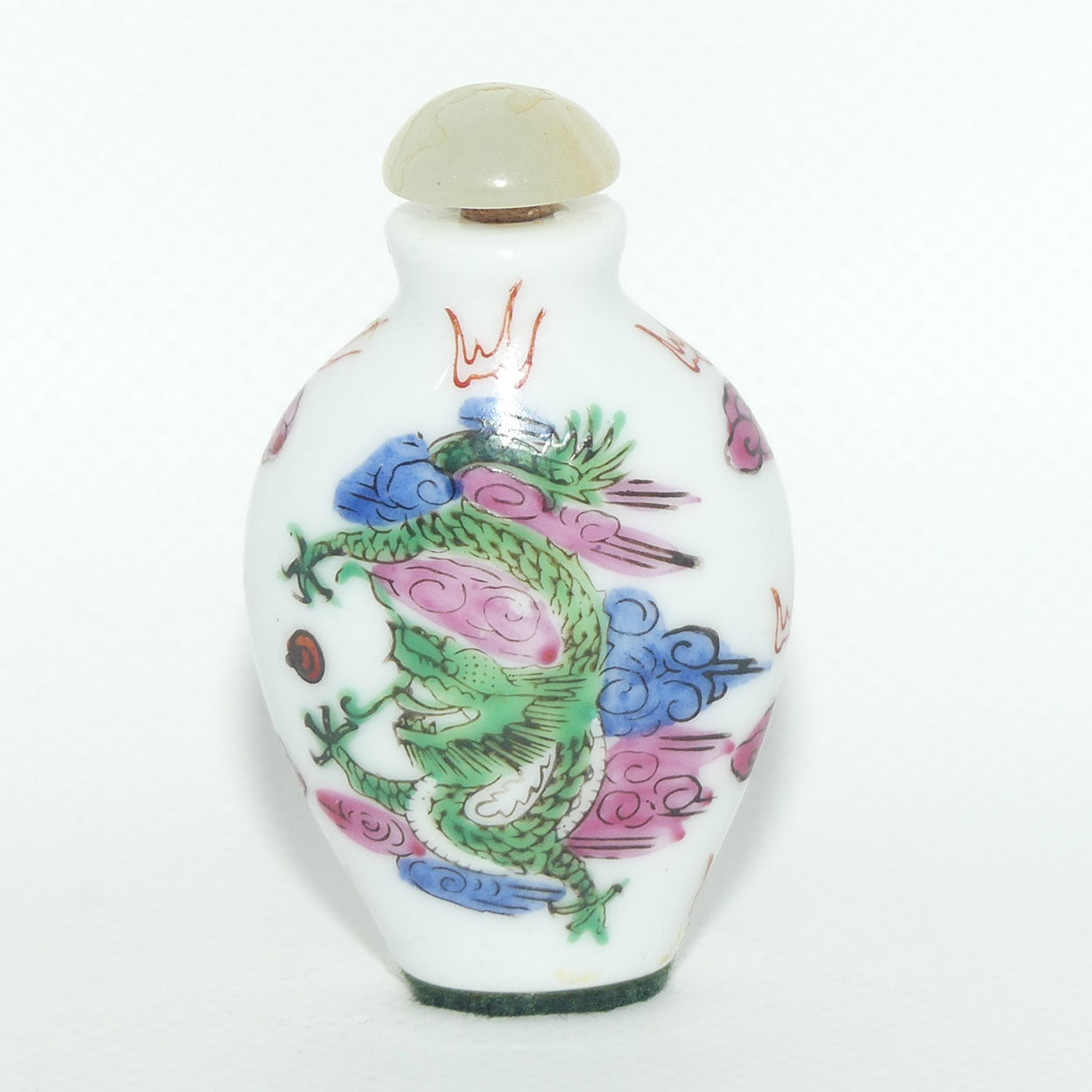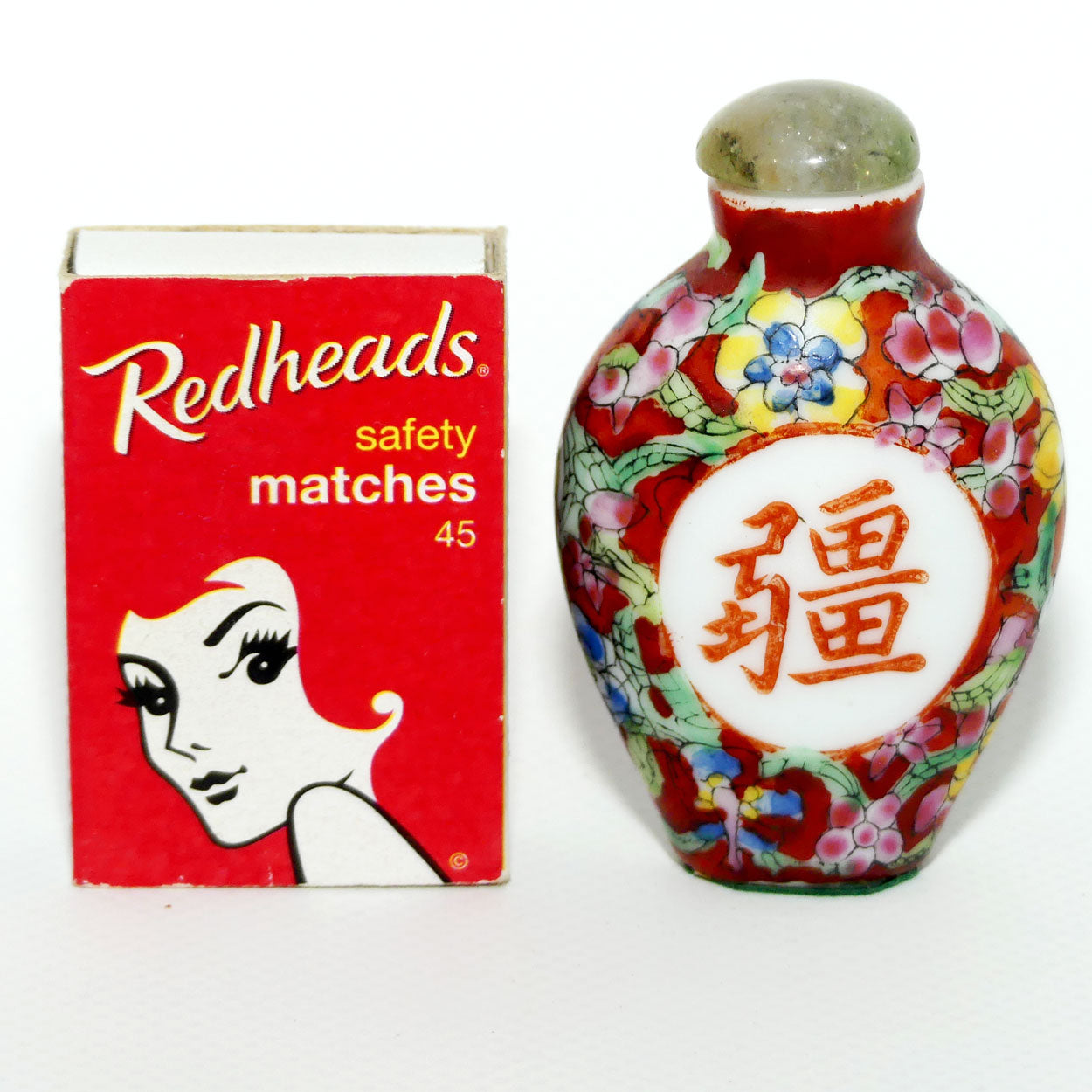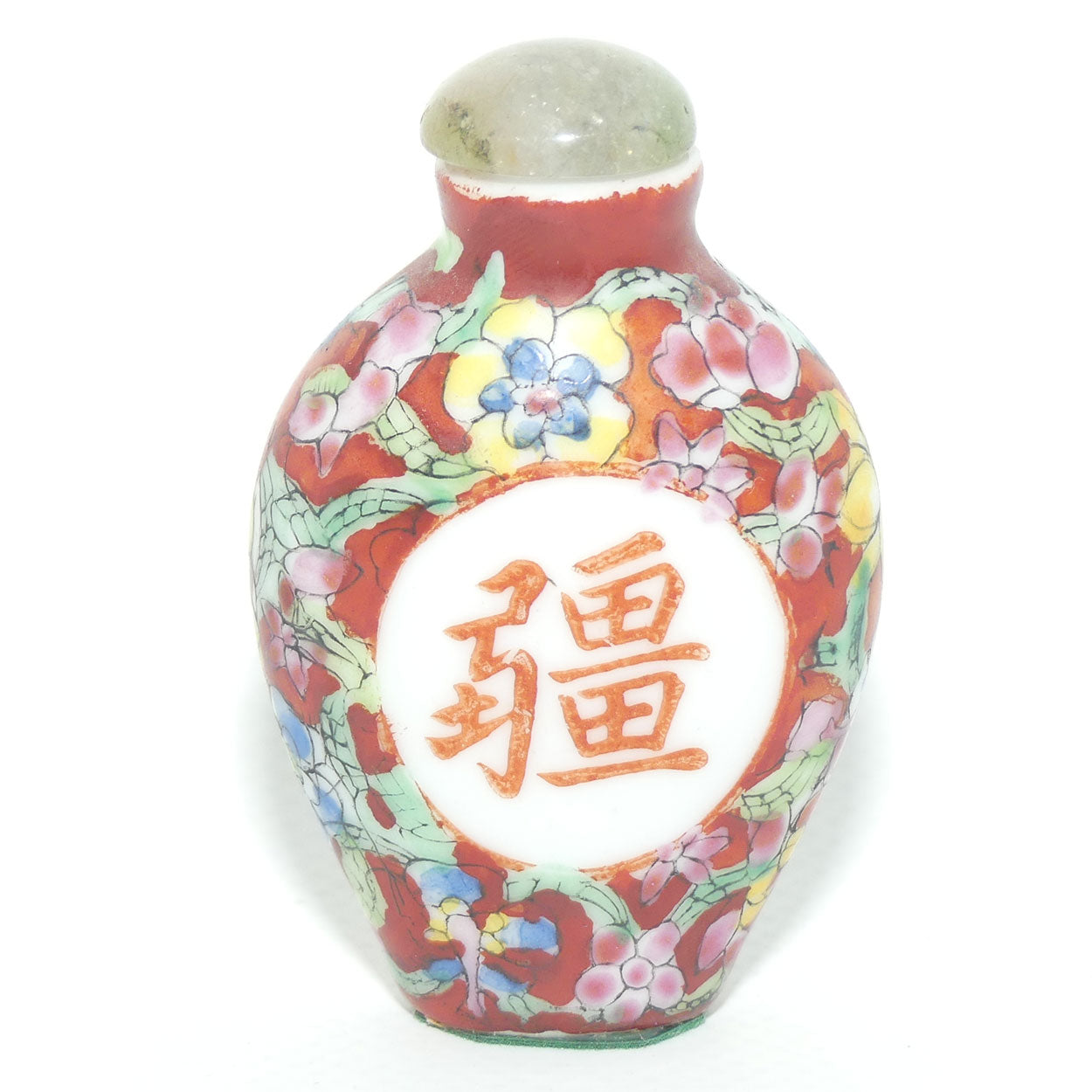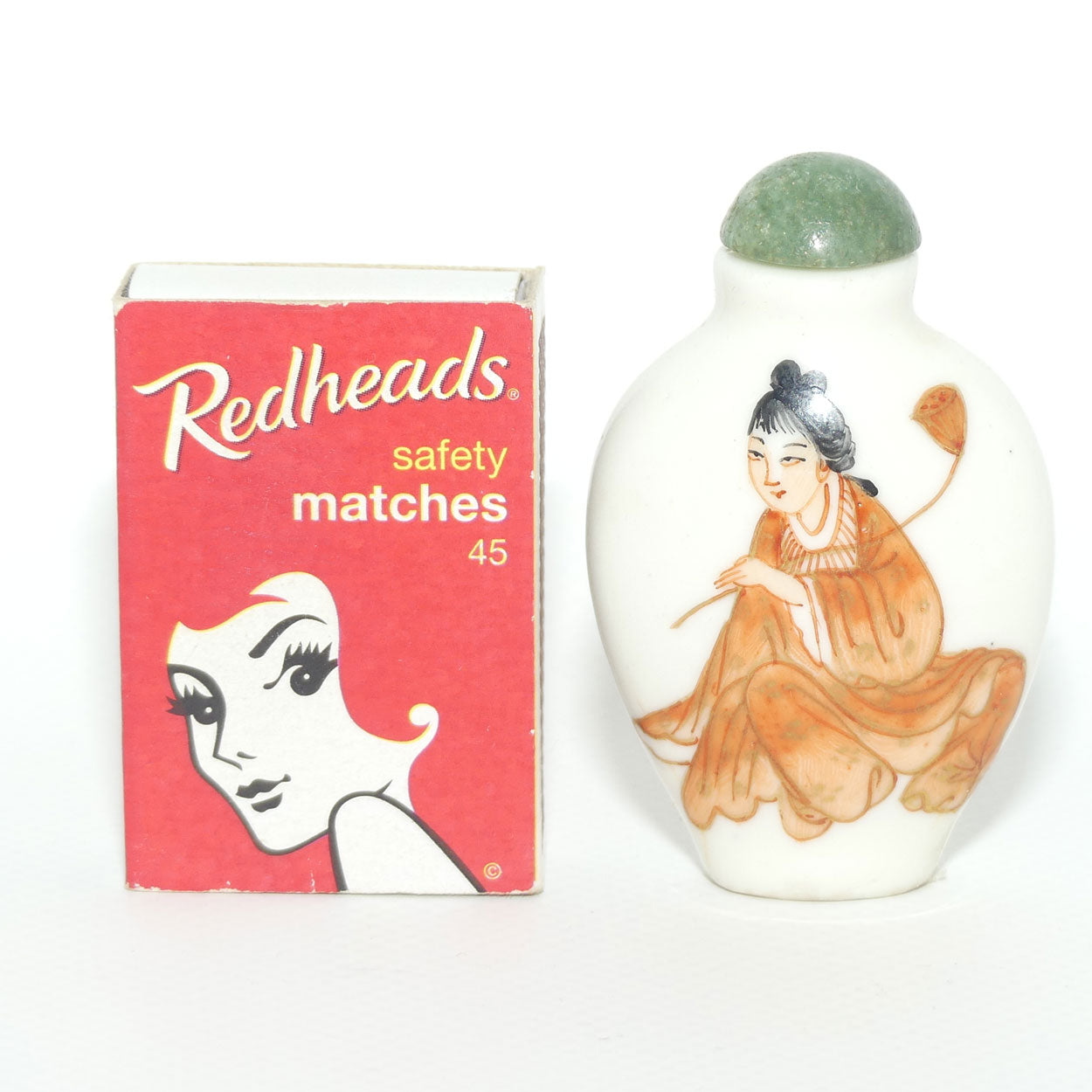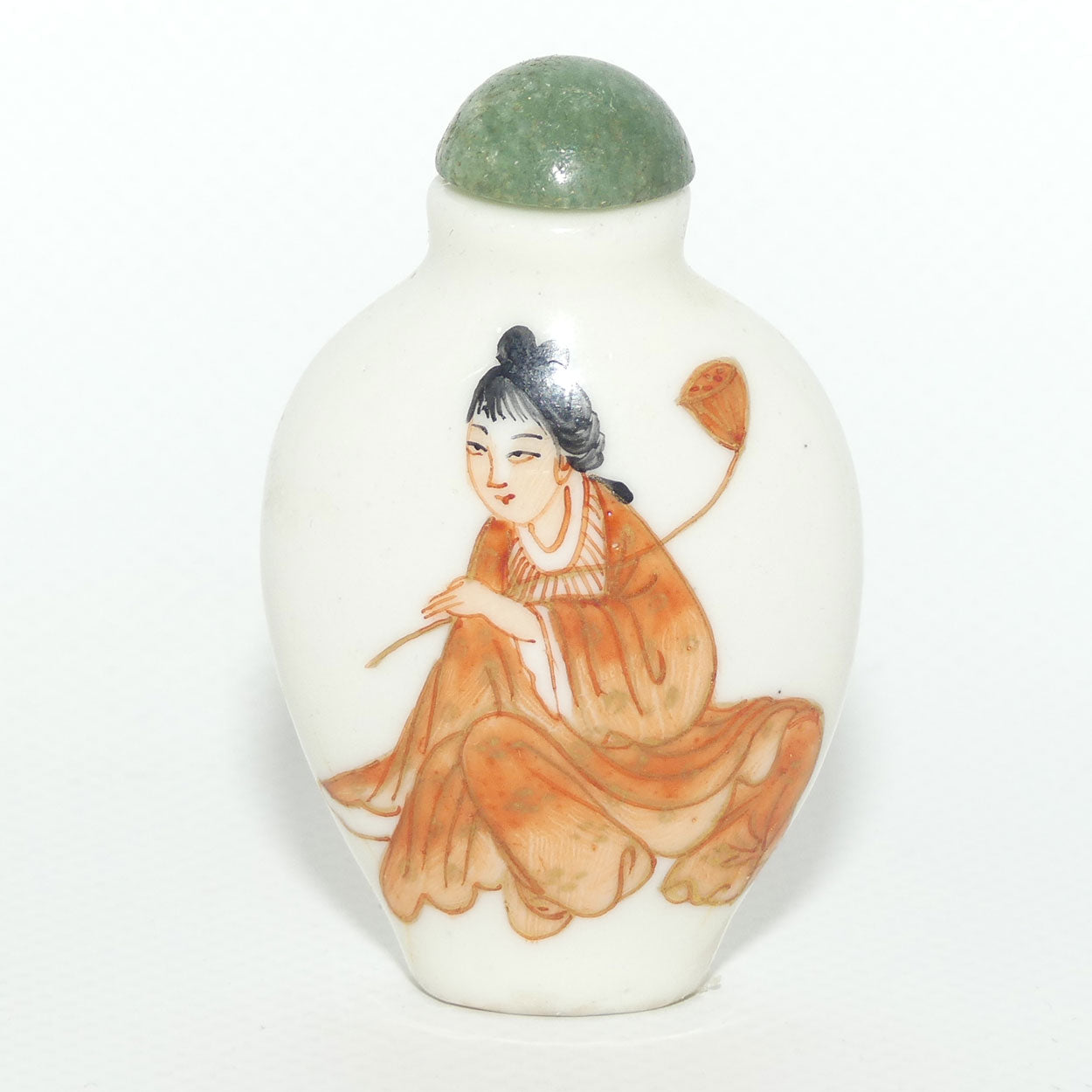Snuff bottles were used during the Qing dynasty to contain powdered tobacco. Smoking tobacco was illegal during the Qing dynasty, but the use of snuff was allowed because the Chinese considered snuff to be a remedy for common illnesses such as colds, headaches and stomach disorders. Therefore, snuff was carried in a small bottle like other medicines. The snuff bottle replaced the snuff box used by Europeans.
The size of a snuff bottle is small enough to fit inside the palm. Snuff bottles were made out of many different materials including porcelain, jade, horn, ivory, wood, coconut shells, lapis lazuli, carnelian, malachite, quartz, tortoiseshell, turquoise, agate, mother-of-pearl though probably the most commonly used material was glass. The stopper usually had a very small spoon attached for extracting the snuff. Though rare, such bottles were also used by women in Europe in Victorian times, with the bottles typically made of cut glass.
Chinese snuff bottles were typically decorated with paintings or carvings, which distinguished bottles of different quality and value. Decorative bottles were, and remain, time-consuming in their production and are thus desirable for today's collectors.
What is Snuff?
Snuff is a smokeless tobacco product made from finely ground tobacco leaves. It can be dry or moist, and is typically inhaled through the nose (dry snuff) or placed between the gums and cheek or behind the lip (moist snuff). Snuff, especially moist forms like dip and snus, is a form of smokeless tobacco.
